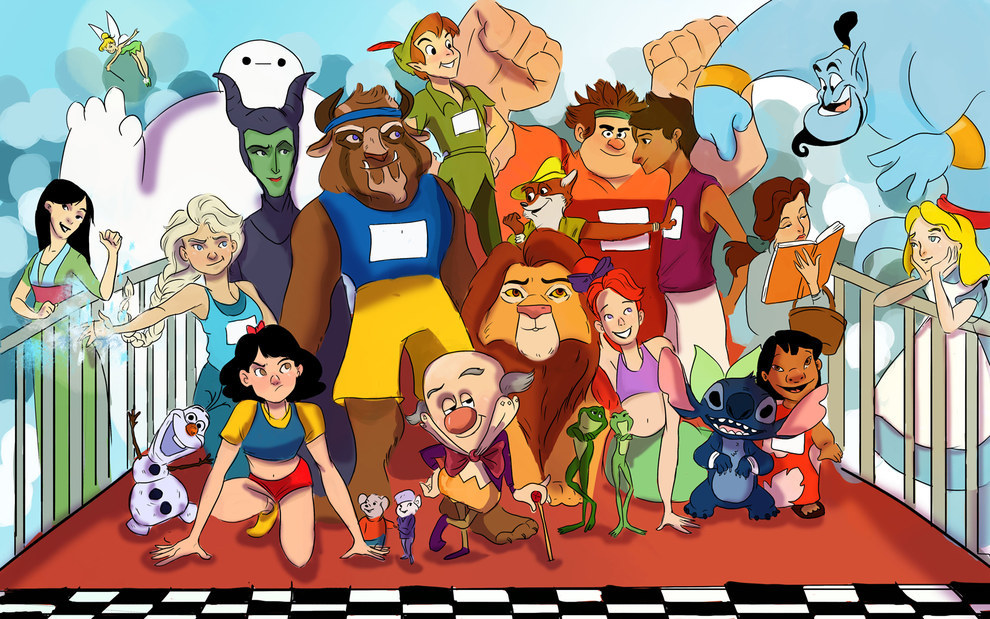
Monique Steele for BuzzFeed News
The Disney movie closest to your heart is
probably the one you saw at just the right age and rewatched on a
parent-tormenting loop. Trying to objectively critique these movies can
be a challenge. How do you assess their quality without taking nostalgia
into account?
So, to embark on the Herculean task of ranking every Disney Animation Studios film — not movies put out by DisneyToon (A Goofy Movie), classic coproductions (Mary Poppins),
or more contemporary collaborations (anything by Pixar) — I rewatched
all 55 of these movies and developed a scoring system based on plot,
characters, music, animation, and influence.The results are, of course, tempered by personal bias, but I did my best to look at the big picture. If nothing else, hopefully we can agree on what makes the best of Disney so timeless and exceptional: strong stories with gorgeous visuals, stirring music, and that inexplicable quality we so often call “heart.”
Now, without further ado, here is my ranking of all 55 Disney Animation Studios films, from worst to best.
55. Make Mine Music (1946)
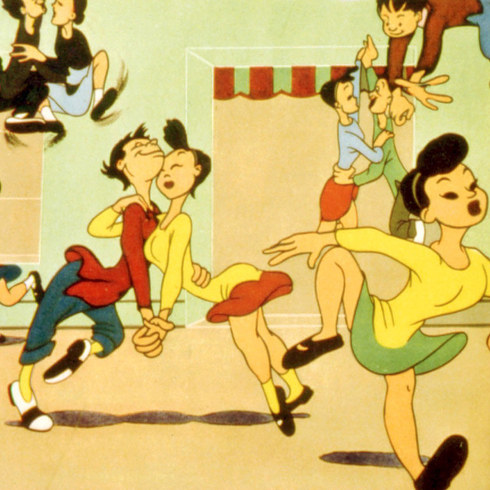
Walt Disney Animation Studios
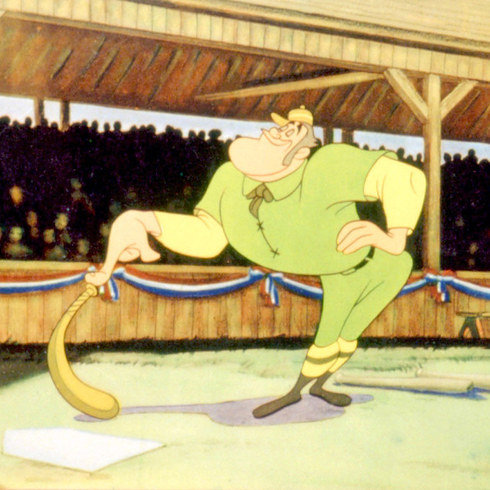
Walt Disney Animation Studios
Directed by: Jack Kinney, Clyde Geronimi, Hamilton Luske, Joshua Meador, and Robert Cormack
Written by: Walt Disney, James Bordrero, Homer Brightman, Erwin Graham, Eric Gurney, T. Hee, Sylvia Holland, Dick Huemer, Dick Kelsey, Jesse Marsh, Tom Oreb, Cap Palmer, Erdman Penner, Harry Reeves, Dick Shaw, John Walbridge, and Roy Williams
In the ’40s, Disney animators were divided between the Army and
making propaganda films on the home front. The only feature-length films
they produced were the notorious package films, collections of
unrelated shorts mashed together, sometimes with a rough frame narrative
but more often not. Make Mine Music is the worst offender: There’s some nice animation (Blue Bayou is subtly gorgeous) and the occasional memorable story (The Whale Who Wanted to Sing at the Met
is weird enough to stick with you), but there’s no connective tissue to
make the film as a whole feel even remotely cohesive. While Make Mine Music
is interesting as a time capsule, it doesn’t offer much for modern-day
audiences. The most controversial bits have been edited out: Gone are
the bare breasts in All the Cats Join In, while The Martins and the McCoys has been removed entirely for its “graphic gunplay.” Even restoring those moments merits only the slightest shrug.Written by: Walt Disney, James Bordrero, Homer Brightman, Erwin Graham, Eric Gurney, T. Hee, Sylvia Holland, Dick Huemer, Dick Kelsey, Jesse Marsh, Tom Oreb, Cap Palmer, Erdman Penner, Harry Reeves, Dick Shaw, John Walbridge, and Roy Williams
54. Home on the Range (2004)
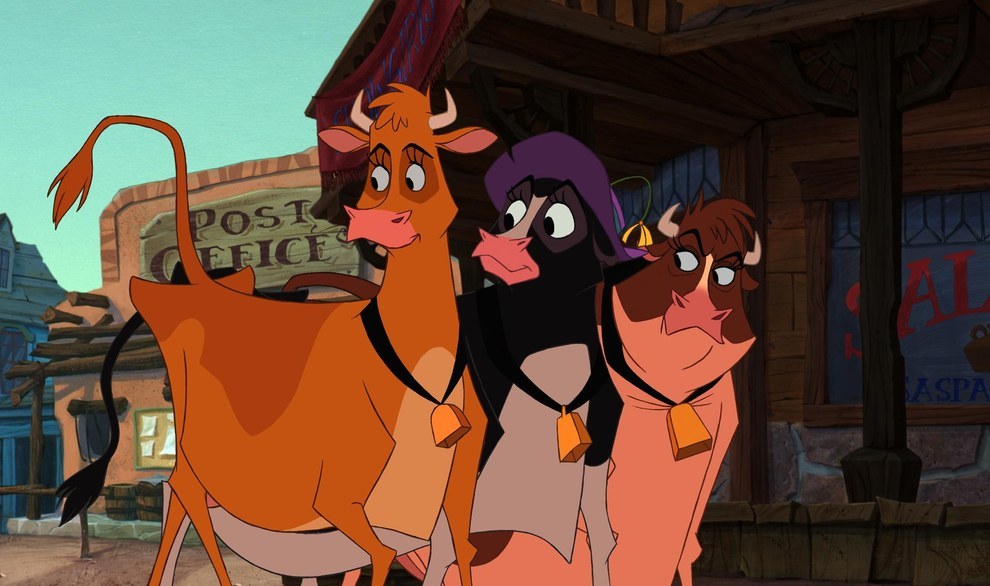
Walt Disney Animation Studios
Directed by: Will Finn and John Sanford
Written by: Will Finn and John Sanford
With the vocal talents of Roseanne Barr, Dame Judi Dench, and
Jennifer Tilly as three cows on a quest to save their struggling owner’s
farm, Home on the Range should be a lot more fun than it is.
But like so many Disney films in the early 2000s, it’s all over the
place. The humor is largely juvenile and slapstick — burping is a punch
line — and the entire enterprise feels too cartoony to be taken
seriously. If there’s an emotional core to the film, it’s lost amid all
the silly action and instantly forgettable musical numbers. At least the
package films have a reason to feel as scattered as they do. Home on the Range
is disjointed simply because of its subpar writing. It’s clearly geared
toward children, but unlike the vast majority of Disney films, there’s
nothing in it to keep adults entertained. And while some suspension of
disbelief is necessary for all anthropomorphic animal movies, there is
still a depressing lack of logic here. Just trying to imagine how three
bovines are able to hogtie a cattle rustler is enough to take you out of
the movie entirely.Written by: Will Finn and John Sanford
53. Fun and Fancy Free (1947)
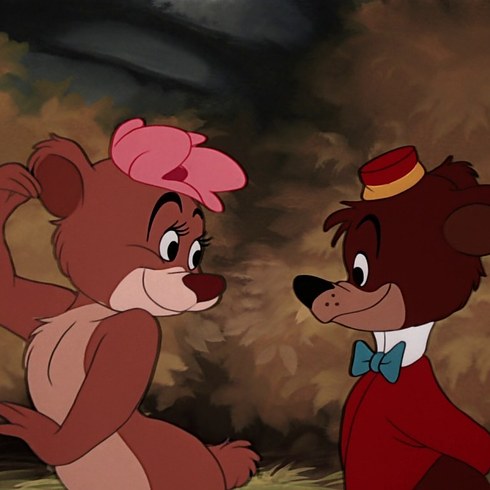
Walt Disney Animation Studios
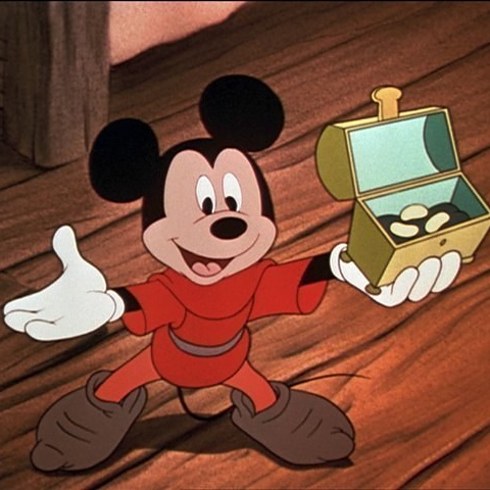
Walt Disney Animation Studios
Directed by: Jack Kinney, Bill Roberts, Hamilton Luske, and William Morgan
Written by: Homer Brightman, Eldon Dedini, Lance Nolley, Tom Oreb, Harry Reeves, Ted Sears, and Sinclair Lewis
Another package film, Fun and Fancy Free has the advantage of two longer segments: Bongo, about a circus bear who escapes captivity and falls in love, and Mickey and the Beanstalk,
a Disney take on the classic fairy tale. Both are fine, though the
latter has more substance. It’s nice to see Mickey as a hero, and Donald
Duck and Goofy also make appearances. (In a recurring gag, Goofy’s
pants repeatedly fall down, which is not the sharp writing audiences
would come to expect from Disney’s subsequent animated films.) But the
most egregious aspect of Fun and Fancy Free is the live-action
interstitial featuring ventriloquist Edgar Bergen and his dummies
Charlie McCarthy and Mortimer Snerd. It has no bearing on the plot,
except for the fact that Bergen narrates the story of Mickey and Willie
the Giant, and there are some truly dreadful puns. It’s unclear why this
live-action scene was included at all: Unlike Willie the Giant wearing
the iconic Brown Derby restaurant as a hat, it’s utterly charmless.Written by: Homer Brightman, Eldon Dedini, Lance Nolley, Tom Oreb, Harry Reeves, Ted Sears, and Sinclair Lewis
52. The Three Caballeros (1944)

Walt Disney Animation Studios
Directed by: Norman Ferguson, Clyde Geronimi, Jack Kinney, Bill Roberts, and Harold Young
Written by: Homer Brightmen, Ernest Terrazas, Ted Sears, Bill Peet, Ralph Wright, Elmer Plummer, Roy Williams, William Cottrell, Del Connell, and James Bodrero
The Three Caballeros isn’t exactly a sequel, but it’s certainly a thematic follow-up to Saludos Amigos.
In contrast to most of the package films, the narrative here actually
works: It’s Donald Duck’s birthday, and each of the gifts he receives
inspires a different segment. (A film projector with photos of birds
helps recount the tale of Pablo, a penguin who longs for warmer
climates.) The humor of these cartoons is more Looney Tunes than Disney,
but what the film lacks in substance it makes up for in style. Donald’s
buddies José Carioca, the cigar-smoking parrot, and Panchitos Pistoles,
a pistol-wielding rooster, round out the titular caballeros and join
forces for some of the film’s most dynamic sequences, full of vibrant
colors and catchy music. Aurora Miranda (the sister of the more famous
Carmen) also makes a memorable appearance. By the time The Three Caballeros goes off the rails with a bizarre fantasy sequence (the aptly named Donald’s Surreal Reverie), you’re either in sync with the beat or not.Written by: Homer Brightmen, Ernest Terrazas, Ted Sears, Bill Peet, Ralph Wright, Elmer Plummer, Roy Williams, William Cottrell, Del Connell, and James Bodrero
51. Chicken Little (2005)
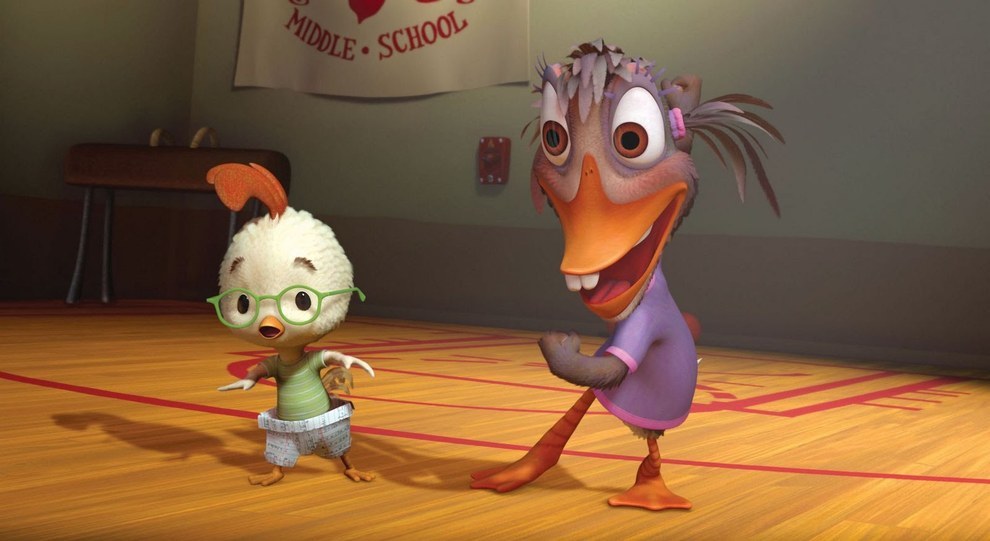
Walt Disney Animation Studios
Directed by: Mark Dindal
Written by: Steve Bencich, Ron J. Friedman, and Ron Anderson
The best thing that can be said about Chicken Little is that
it’s inoffensive. There’s nothing particularly wrong with this early
computer-animated effort from Disney, but there’s nothing particularly
right about it either. The movie is a cute, mildly amusing adaptation —
and that term is used loosely — of the fairy tale in which Chicken
Little is hit by an acorn and believes that the sky is falling. Here, an
imminent alien attack is underway, and no one believes poor Chicken
Little. Despite some sweet moments (and one truly regrettable karaoke
rendition of the Spice Girls’ “Wannabe”), the plot never really comes
together. There’s simply too much going on here, from Chicken Little’s
budding baseball career to the underdeveloped sci-fi subplot. The big
moments, like Chicken Little and his “ugly duckling” friend Abby Mallard
sharing their first kiss, come out of nowhere as a result of the
unfocused script. What does work is Chicken Little’s relationship with
his father, Buck “Ace” Cluck, a high school sports legend who has
trouble relating to his accident-prone offspring.Written by: Steve Bencich, Ron J. Friedman, and Ron Anderson
50. Melody Time (1948)
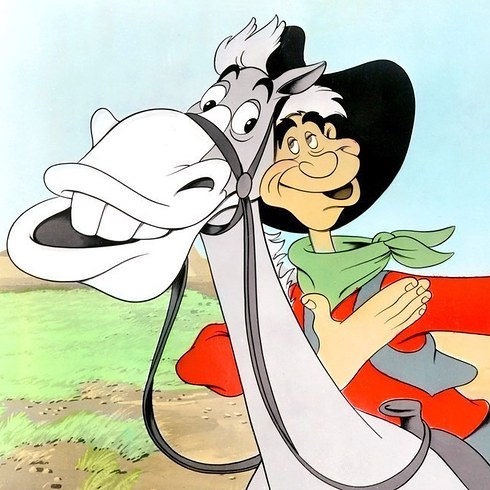
Walt Disney Animation Studios
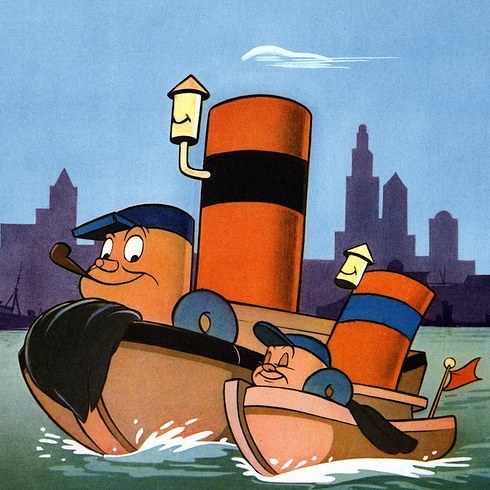
Walt Disney Animation Studios
Directed by: Jack Kinney, Clyde Geronimi, Hamilton Luske, and Wilfred Jackson
Written by: Winston Hibler, Harry Reeves, Ken Anderson, Erdman Penner, Homer Brightman, Ted Sears, Joe Rinaldi, William Cottrell, Jesse Marsh, Art Scott, Bob Moore, and John Walbridge
Melody Time stands out from other package films for a few notable segments. Once Upon a Time in Wintertime is stunning and surprisingly tense, Bumble Boogie offers a distinctive blend of color and texture, and The Legend of Johnny Appleseed is a cute retelling of the well-known tale. That being said, Melody Time
suffers from a familiar problem: There is a lack of logic to the
collection, which includes more traditional stories with abstract shorts
that would be better suited for Fantasia. (In fact, several of
the shorts in the package films were originally intended for the 1940
classic.) It’s jarring to move from Little Toot, the story of an anthropomorphic boat, to Trees, a poetic (and ultimately melancholy) meditation on the changing seasons. And Blame It on the Samba is a lot of fun, but that doesn’t mean much without context. Thanks to some standout animation, certain segments of Melody Time
are worthy of repeat viewing, but at the end of the day, it’s another
package film, slapped together with little thought about what the
audience might want.Written by: Winston Hibler, Harry Reeves, Ken Anderson, Erdman Penner, Homer Brightman, Ted Sears, Joe Rinaldi, William Cottrell, Jesse Marsh, Art Scott, Bob Moore, and John Walbridge
49. Saludos Amigos (1942)
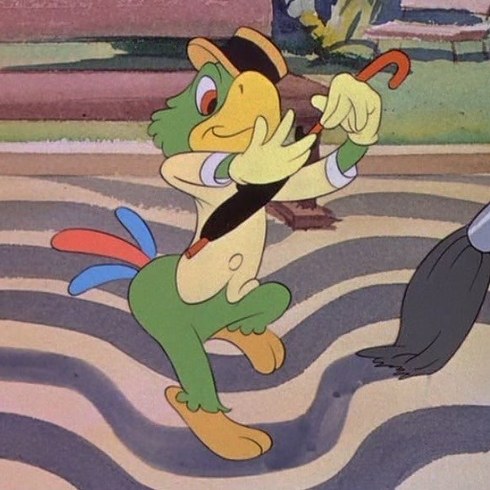
Walt Disney Animation Studios
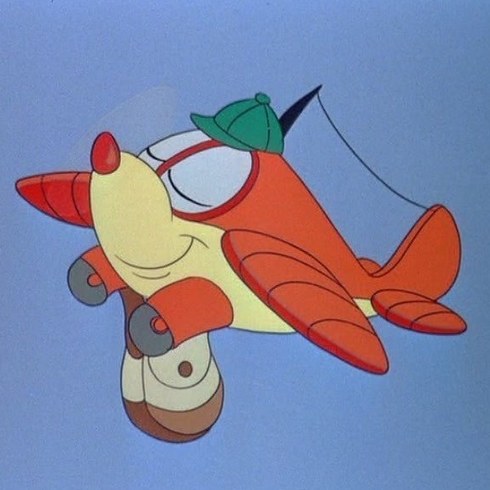
Walt Disney Animation Studios
Directed by: Norman Ferguson, Wilfred Jackson, Jack Kinney, Hamilton Luske, and William Roberts
Written by: Homer Brightman, William Cottrell, Richard Huemer, Joseph Grant, Harold Reeves, Ted Sears, Webb Smith, Roy Williams, and Ralph Wright
Because it’s the first of Disney’s package films, Saludos Amigos seems almost innovative. It contains only four segments, mercifully, at least two of which are good: Lake Titicaca, which follows Donald Duck as a tourist in South America, and El Gaucho Goofy, in which cowboy Goofy learns to be a gaucho. The final segment is at least nice to look at. Aquarela do Brasil,
Portuguese for “Watercolor of Brazil,” is just that — it introduces the
character of José Carioca, who teaches Donald how to samba against a
beautifully realized painted backdrop of the country. The use of actual
Portuguese grants the entire enterprise an authenticity that might
otherwise be lacking. The frame narrative here works in part because
it’s so literal: The Disney artists travel to Latin America, where they
explore the country and let it inspire their work. This is, more or
less, a documentary reflecting the real goodwill trip that inspired Saludos Amigos and, later, The Three Caballeros.
The latter may be better remembered, but the former is more
consistently entertaining and better appreciated as a singular work.Written by: Homer Brightman, William Cottrell, Richard Huemer, Joseph Grant, Harold Reeves, Ted Sears, Webb Smith, Roy Williams, and Ralph Wright
48. The Fox and the Hound (1981)
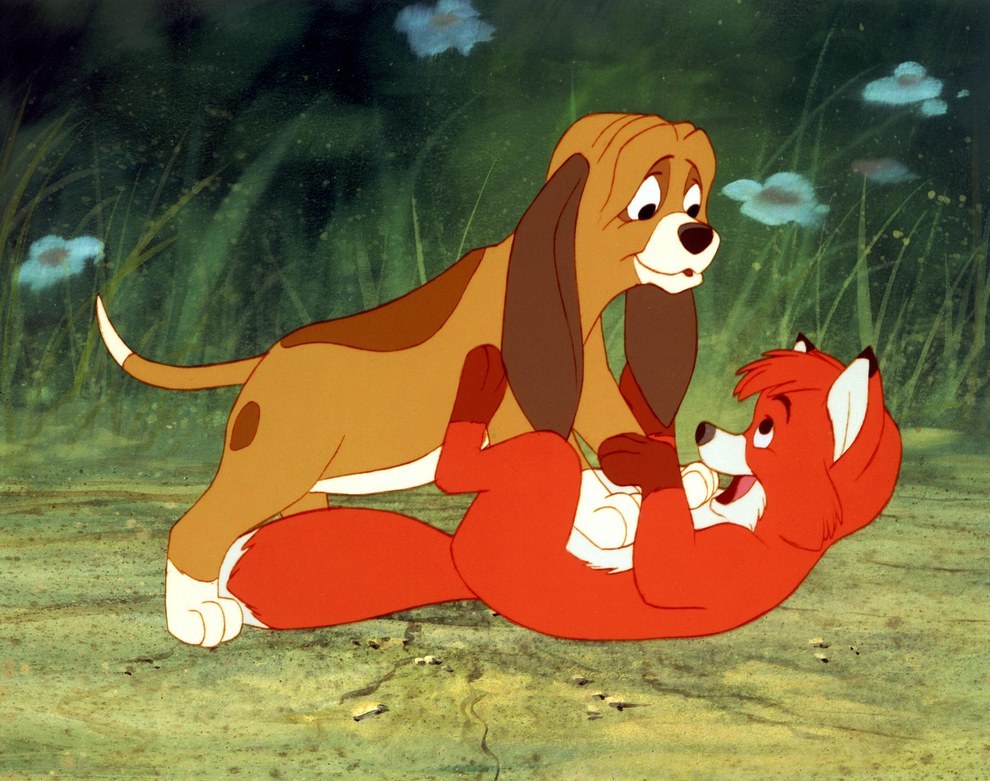
Walt Disney Animation Studios
Directed by: Ted Berman, Richard Rich, and Art Stevens
Written by: Ted Berman and Larry Clemmons
The Fox and the Hound has its fans, most of whom are almost
certainly masochists. Of all Disney’s bleaker offerings, this film is
the most relentlessly depressing, telling the story of Tod the fox and
Copper the hound, two young companions who grow up and realize their
adorable interspecies relationship can never be sustained. Trauma
abounds, from the Widow Tweed abandoning Tod at a game preserve, to the
brutal showdown between Tod, Copper, and a vicious bear. For those who
cower at the thought of animals in peril, The Fox and the Hound
is an exercise in cinematic torture. But personal tastes aside, it’s
just a mediocre Disney film. The characters, however cute they look, are
at best underdeveloped and at worst unlikable. It’s lose-lose: The
movie will bore you unless you force an investment, and doing that will
only get you hurt. At least Bambi — who, like Tod, loses a mother very
early on — had friends who stuck by him. The Fox and the Hound suggests a much more cynical (albeit realistic) interpretation of the animal kingdom.Written by: Ted Berman and Larry Clemmons
47. Robin Hood (1973)
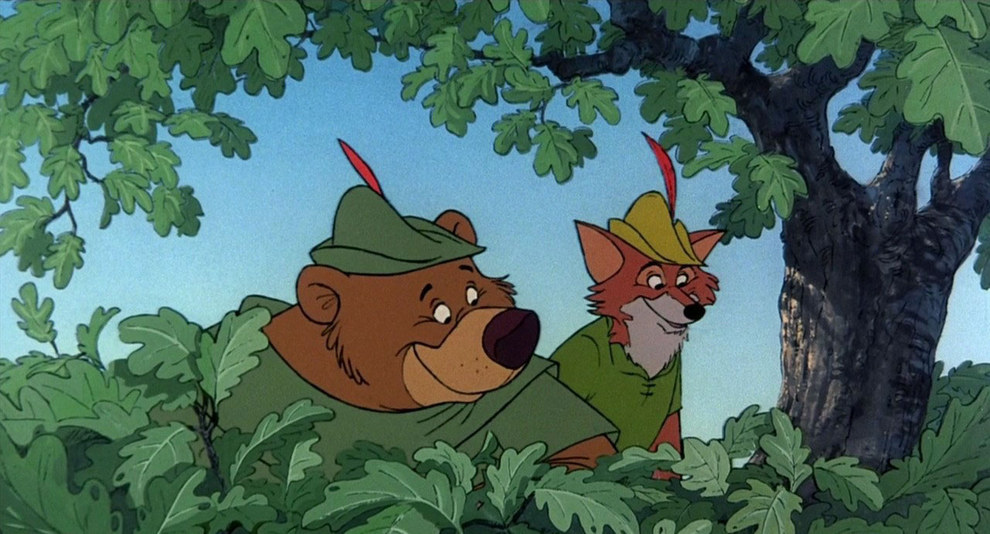
Walt Disney Animation Studios
Directed by: Wolfgang Reitherman
Written by: Larry Clemmons
Robin Hood is often criticized for recycling animated
sequences from past Disney films, and with good reason — thanks to a
small budget, the animators pulled from Snow White and the Seven Dwarfs, The Jungle Book, and The Aristocats.
Once you know to look for these moments, they’re impossible to unsee.
But the animation, which doesn’t look as cheap as it could all things
considered, isn’t the only problem with Robin Hood. While
there’s a definite plot, much of the running time is devoted to comic
relief characters and set pieces, some parts of which work better than
others. One particularly irksome example: an extended football sequence
that’s both overly long and completely out of place. It’s a shame,
because what works, works well. The decision to recast the familiar
story with anthropomorphic animals is a smart one (not to mention
sexually confusing to those who found themselves attracted to a talking
fox). And some of the songs are nice, especially the catchy “Oo De
Lally” and the gorgeous “Love,” which is featured in a sequence that’s
as charming as it is out of place.Written by: Larry Clemmons
46. Fantasia 2000 (1999)
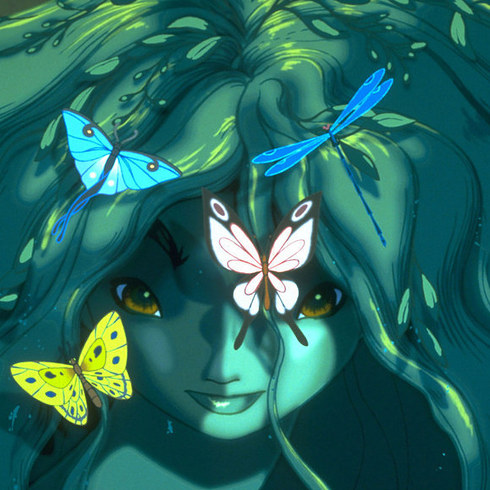
Walt Disney Animation Studios
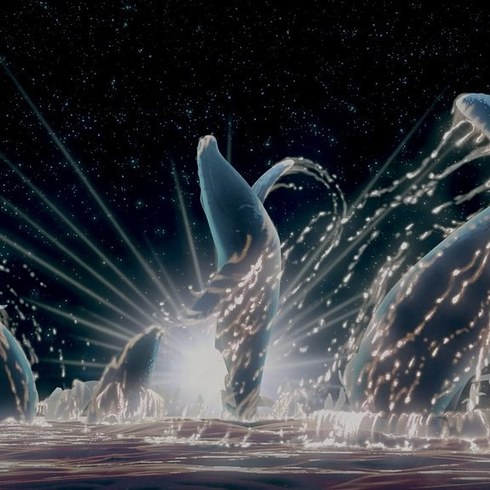
Walt Disney Animation Studios
Directed by: Don Hahn, Pixote Hunt, Hendel Butoy, Eric Goldberg, James Algar, Francis Glebas, and Paul and Gaëtan Brizzi
Written by: Don Hahn, Irene Mecchi, David Reynolds, Kevin Yasuda, James Fujii, Eric Goldberg, James Capobianco, Ron Meurin, Perce Pearce, Carl Fallberg, Robert Gibbs, Terry Naughton, Todd Kurosawa, Pat Ventura, Don Dougherty, Stevie Wermers, and Paul and Gaëtan Brizzi
Fantasia 2000 is beautiful and completely superfluous. When Walt Disney made the original Fantasia
in 1940, he had planned on producing a series of films featuring both
new and recurring shorts scored to classical music. (Instead we got the
package films. Ah, well.) With that in mind, Fantasia 2000 is a
fine idea, and it does do a great job of reflecting the staggering
advances in animation since Disney’s time. But there’s very little
substance to any of the short films here: They’re pretty but empty. That
would be less of a crime if Fantasia 2000 hadn’t been released
at the end of a decade that represented the very best of Disney
Animation’s storytelling abilities. And when it comes to story alone, The Sorcerer’s Apprentice, recycled from the original Fantasia, remains the standout. That having been said, there are some truly stunning sequences, namely Pines of Rome (even if those levitating CGI whales haven’t aged terribly well) and the climactic The Firebird, which almost makes the whole endeavor worthwhile. Almost.Written by: Don Hahn, Irene Mecchi, David Reynolds, Kevin Yasuda, James Fujii, Eric Goldberg, James Capobianco, Ron Meurin, Perce Pearce, Carl Fallberg, Robert Gibbs, Terry Naughton, Todd Kurosawa, Pat Ventura, Don Dougherty, Stevie Wermers, and Paul and Gaëtan Brizzi
45. The Black Cauldron (1985)
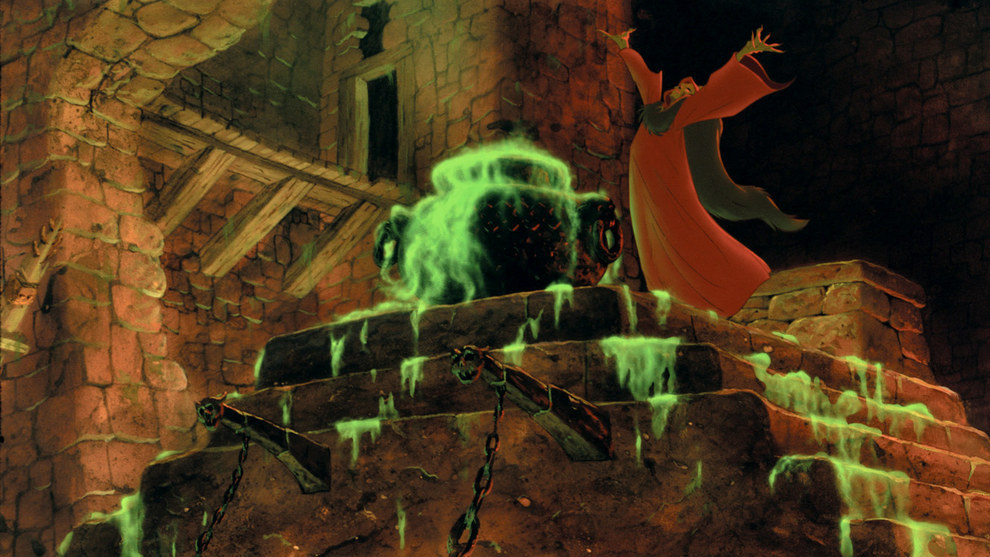
Walt Disney Animation Studios
Directed by: Ted Berman and Richard Rich
Written by: Ted Berman, Vance Gerry, Joe Hale, David Jonas, Roy Morita, Richard Rich, Art Stevens, Al Wilson, and Peter Young
The Black Cauldron is notorious for being a critical and
commercial failure. It’s stylistically so different from anything that
came before it or after it, making it easy to forget it’s a Disney film.
(Disney would probably prefer it that way. It took more than a decade
before the film was released on home video.) But The Black Cauldron’s
uniqueness is one of its assets. While it’s easy to condemn the film
for being oddly dark and more complex than typical Disney fare, it’s
refreshing to see the studio taking chances with more mature source
material like Lloyd Alexander’s book series The Chronicles of Prydain. And the animation style, though unfamiliar, is captivating. Would The Black Cauldron
have fared better if it weren’t a Disney film? Probably — but not by
much. Putting all the unfair criticisms aside, there are plenty of
legitimate complaints to be made. The film’s writers tried their best to
condense two books worth of material into an 80-minute movie, and the
results are predictably lacking. There are hints of a great dark fantasy
film here; sadly, The Black Cauldron is not it.Written by: Ted Berman, Vance Gerry, Joe Hale, David Jonas, Roy Morita, Richard Rich, Art Stevens, Al Wilson, and Peter Young
44. Dumbo (1941)
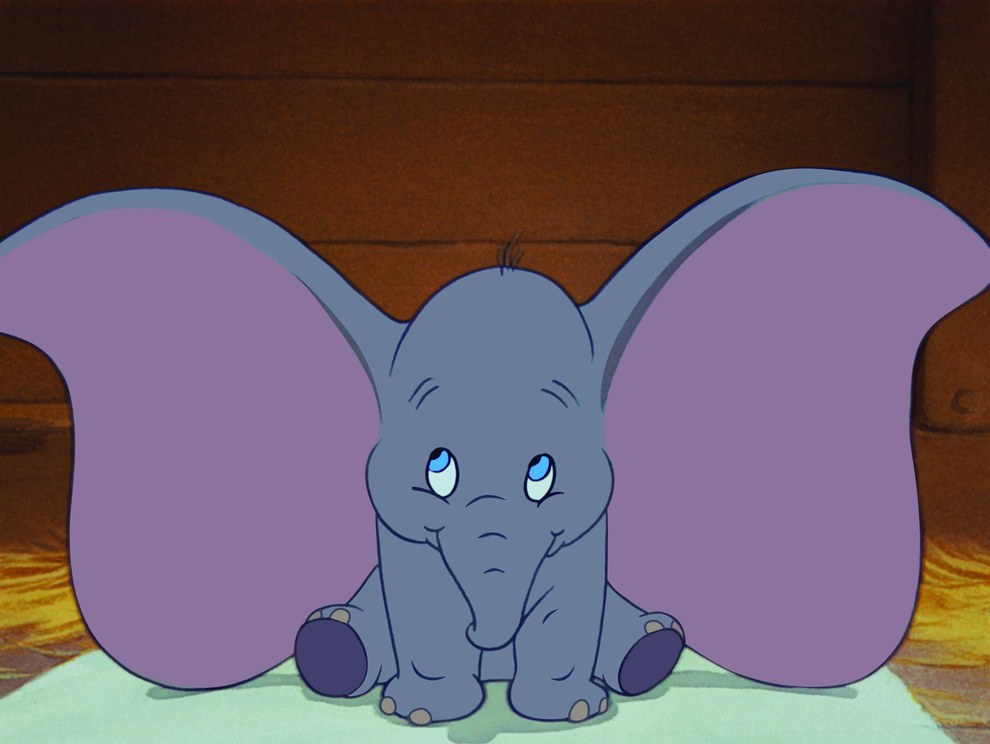
Walt Disney Animation Studios
Directed by: Ben Sharpsteen, Norman Ferguson, Wilfred Jackson, William “Bill” Roberts, Jack Kinney, and Samuel Armstrong
Written by: Otto Englander, Joe Grant, and Dick Huemer
As fondly remembered as it may be, Dumbo, at just over an
hour, is slight to a fault — Dumbo himself spends most of the film
getting mocked and mistreated by everyone around him, until he finally
discovers his hidden talent, the ability to fly with his giant ears, at
the end of the movie. It’s a surprisingly somber affair: The best
moment, Dumbo’s mother cradling him with her trunk through the bars of a
cage and singing “Baby Mine,” is also its most devastating. The story
is sweet (if not frequently upsetting), but in addition to its truncated
length, animators were instructed to do things cheaply, which means
significantly less detail than the Disney films before it. And then, of
course, there’s the questionable racism of the crows, commonly regarded
as offensive black stereotypes — less questionable when you learn that
the lead crow is actually named Jim Crow. Yes, the reference is a
product of a different time, but like so much of Dumbo viewed from a modern perspective, it just doesn’t fly.Written by: Otto Englander, Joe Grant, and Dick Huemer
43. Peter Pan (1953)
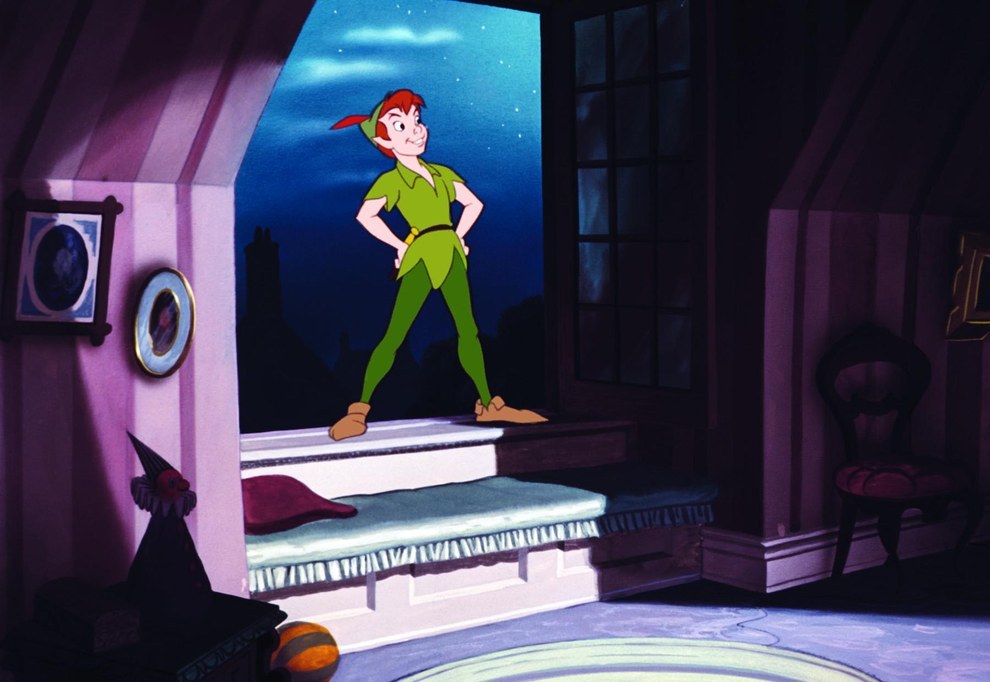
Walt Disney Animation Studios
Directed by: Clyde Geronimi, Wilfred Jackson, and Hamilton Luske
Written by: Milt Banta, William Cottrell, Winston Hibler, Bill Peet, Erdman Penner, Joe Rinaldi, Ted Sears, and Ralph Wright
Here’s what Peter Pan has in common with Dumbo:
It’s one of Disney’s most iconic films and it has a loyal and devoted
fanbase, but it’s also pretty seriously flawed and a lot more racist
than you remember. To be fair, Peter Pan’s racism is no secret —
the song “What Made the Red Man Red?” is generally regarded with the
appropriate amount of shame. But what’s surprising on viewing it today
is how little Peter Pan has to offer. In addition to the
shockingly outdated conception of “Indians,” the film also features a
reductive and frankly offensive portrayal of its female characters, all
of whom are in vicious competition with one another. (Tinker Bell spends
most of the film trying to kill Wendy, who is equally jealous of Tiger
Lily.) So what does Peter Pan have going for it? Some
memorable songs and a lot of gorgeous visuals, including Peter Pan
leading the Darling children in flight over London. When it comes to
mindless diversion, that’s more than enough.Written by: Milt Banta, William Cottrell, Winston Hibler, Bill Peet, Erdman Penner, Joe Rinaldi, Ted Sears, and Ralph Wright
42. Brother Bear (2003)
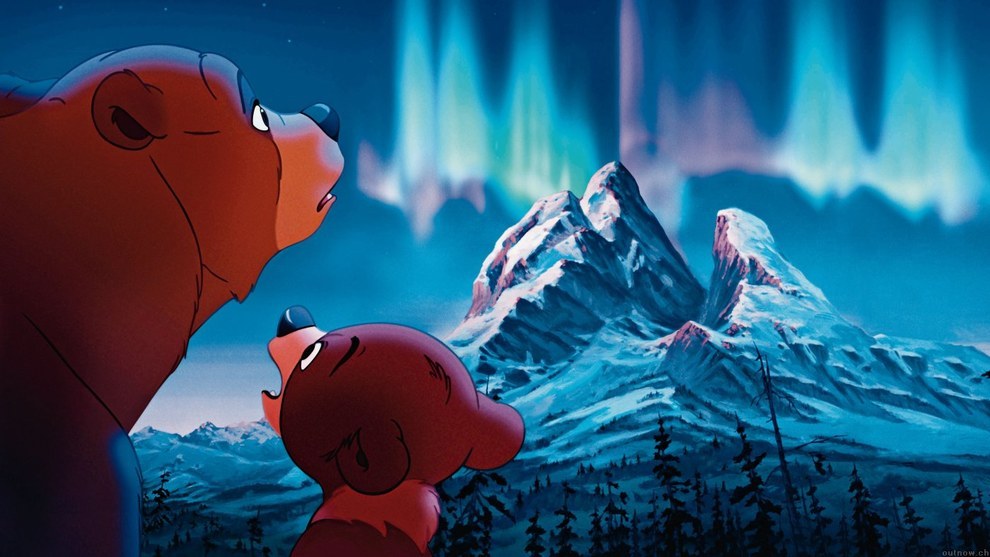
Walt Disney Animation Studios
Directed by: Aaron Blaise and Robert Walker
Written by: Tab Murphy, Lorne Cameron, David Hoselton, Steve Bencich, and Ron J. Friedman
In many ways, Brother Bear is underrated. Though largely
forgotten, it’s one of the more intelligent and emotionally complex
Disney films of the early 2000s. The story follows Kenai, a boy who gets
turned into a bear to teach him a lesson after he murders the bear that
killed his brother Sitka. Kenai befriends another bear, Koda, only to
discover that the bear he killed was Koda’s mother. It’s a brutal twist,
and it’s handled with surprising deftness. The film is also notable for
its unique choice to transition to a wider aspect ratio and a more
vibrant animation style to reflect Kenai’s transformation. That having
been said, Brother Bear makes its share of mistakes. The music
by Phil Collins is intrusive and poorly integrated into the movie,
either too on the nose or completely out of place. And as might be
expected, the ending, however sweet, is a little too pat given the
complexity of the issues at play. Brother Bear is a kids’ movie
that toys with a thematic maturity that it’s afraid to fully embrace,
and that ultimately undermines its lofty goals.Written by: Tab Murphy, Lorne Cameron, David Hoselton, Steve Bencich, and Ron J. Friedman
41. Dinosaur (2000)
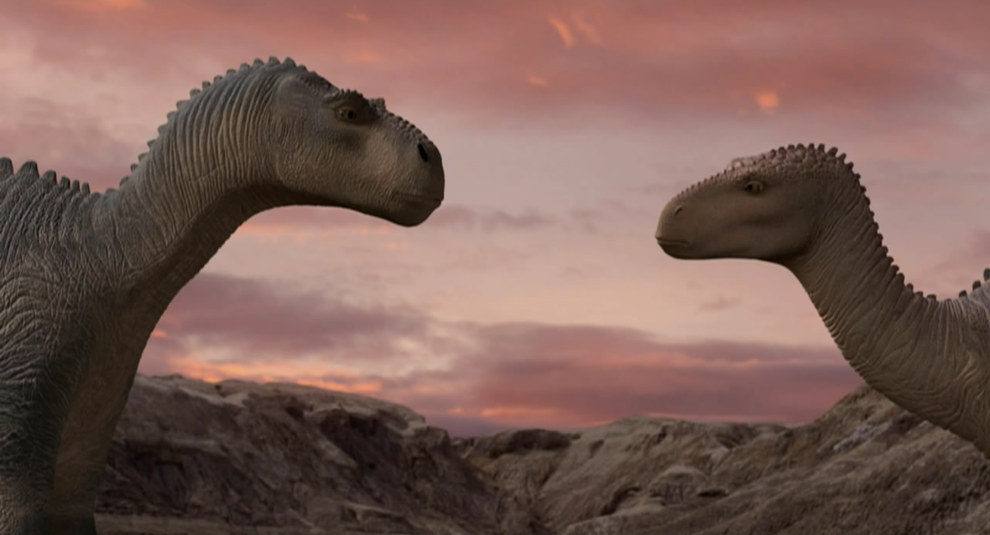
Walt Disney Animation Studios
Directed by: Ralph Zondag and Eric Leighton
Written by: John Harrison and Robert Nelson Jacobs
The worst thing about Dinosaur is the way it looks: The
dinosaurs themselves are computer-animated and displayed against a
live-action background. It’s a neat idea, but it can’t compete with the
technological advancements that have been made over the past 15 years.
At best, it looks like a decent video game. The story, however, is not
bad, even if it does feel a little too close to the non-Disney classic The Land Before Time:
Aladar, an iguanodon whose mother is killed by a carnotaurus, is taken
in by a family of lemurs. When a meteor strikes and separates the
family, the remaining members set out for the safe haven known as the
“Nesting Grounds.” To its credit, Dinosaur is more action-packed and, at times, more frightening than The Land Before Time — it’s violent and dark enough to earn its PG rating, the first since The Black Cauldron.
And although the animation hasn’t aged well, there are still some
stunning sequences, like the truly terrifying meteor scene and its
devastating aftermath.Written by: John Harrison and Robert Nelson Jacobs
40. The Adventures of Ichabod and Mr. Toad (1949)
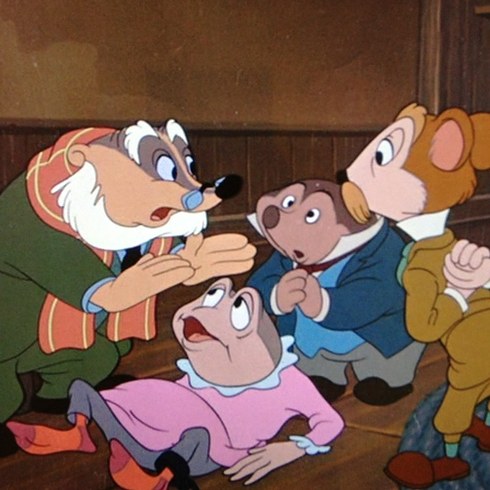
Walt Disney Animation Studios
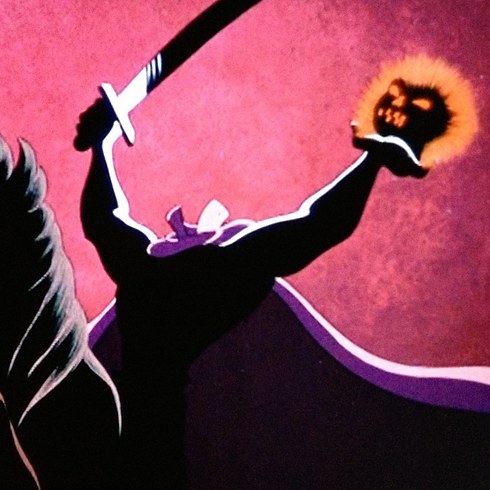
Walt Disney Animation Studios
Directed by: Jack Kinney, Clyde Geronimi, and James Algar
Written by: Erdman Penner, Winston Hibler, Joe Rinaldi, Ted Sears, Homer Brightman, and Harry Reeves
The Adventures of Ichabod and Mr. Toad is easily the best of the package films, although the grouping of its two stories is completely nonsensical. The Wind in the Willows and The Legend of Sleepy Hollow
are vastly different pieces of literature, and that shows in their
adaptations: The former is an irreverent and lighthearted tale, while
the latter is a fairly straightforward horror story. The oddness of the
pairing aside, however, both are pretty good. But not great, as the
animation and songs feel a little less than. (Again, this was the ’40s,
when Disney could hardly afford to be at the top of its game.) Ichabod’s
adventure proves to be the more memorable one, because it’s genuinely
terrifying. The Headless Horseman is one of the scariest characters in
any Disney film. Perhaps by necessity, the animators showed considerable
restraint, which just made him more effective. He’s defined by the
creepy details that stand out against his otherwise minimalist form: the
flowing purple cape and his horse’s red eyes. That flaming pumpkin is
the stuff of nightmares.Written by: Erdman Penner, Winston Hibler, Joe Rinaldi, Ted Sears, Homer Brightman, and Harry Reeves
39. The Aristocats (1970)
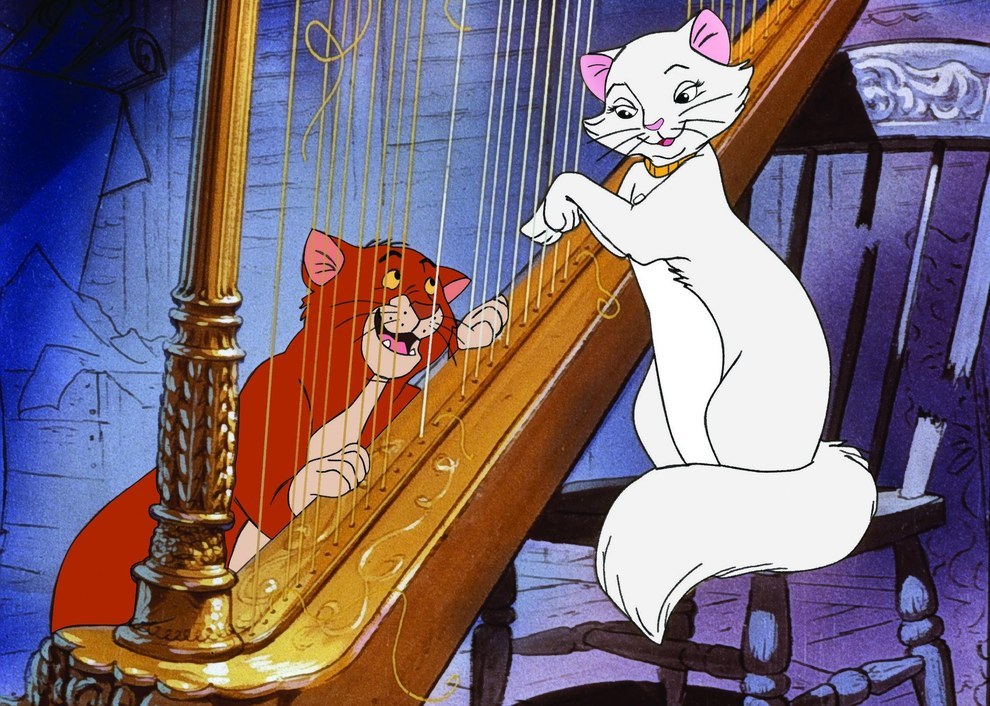
Walt Disney Animation Studios
Directed by: Wolfgang Reitherman
Written by: Ken Anderson, Larry Clemmons, Eric Cleworth, Vance Garry, Julius Svendsen, Frank Thomas, and Ralph Wright
There’s plenty to like about The Aristocats, the charming
story of the regal cat Duchess, her three kittens, and the handsome
stray Thomas O’Malley. The animation has a deliberate line-drawn feel
that allows the cats to be extra expressive, and the titular Maurice
Chevalier song that opens the movie gives it a touch of class. (Well,
that and the incomparable vocal talents of Eva Gabor as Duchess.) The
only reason The Aristocats isn’t ranked higher is that it’s not particularly memorable beyond the charm. It’s cute but not original: Like the superior One Hundred and One Dalmatians,
it revolves around the unpleasant notion of a villain trying to murder a
group of defenseless animals. Meanwhile, the distinctive animal
personalities are reminiscent of Lady and the Tramp, with which the film can’t really compare. The Aristocats
is sweet and often delightful — the high-energy scat song “Ev’rybody
Wants to Be a Cat” is a definite highlight — but it just doesn’t stand
out enough on its own to compare to the very best Disney films.Written by: Ken Anderson, Larry Clemmons, Eric Cleworth, Vance Garry, Julius Svendsen, Frank Thomas, and Ralph Wright
38. Fantasia (1940)
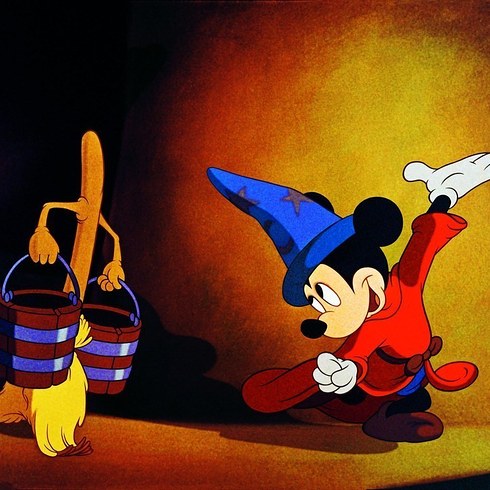
Walt Disney Animation Studios
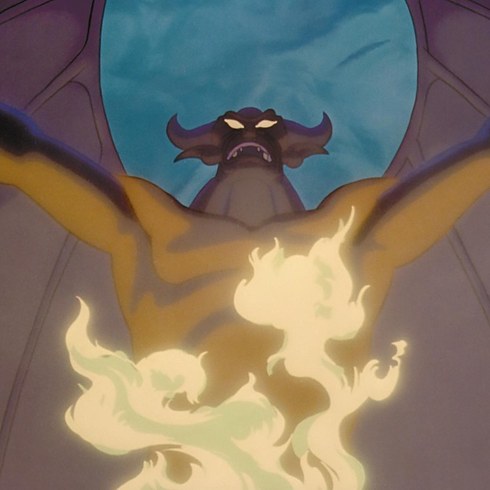
Walt Disney Animation Studios
Directed by: Samuel Armstrong, James
Algar, Bill Roberts, Paul Satterfield, Ben Sharpsteen, David D. Hand,
Hamilton Luske, Jim Handley, Ford Beebe, T. Hee, Norman Ferguson, and
Wilfred Jackson
Written by: Lee Blair, Elmer Plummer, Phil Dike, Sylvia Moberly-Holland, Norman Wright, Albert Heath, Bianca Majolie, Graham Heid, Perce Pearce, Carl Fallberg, William Martin, Leo Thiele, Robert Sterner, John Fraser McLeish, Otto Englander, Webb Smith, Erdman Penner, Joseph Sabo, Bill Peet, George Stallings, Campbell Grant, and Arthur Heinemann
In order to enjoy Fantasia, you have to give yourself over
to it. The film is a visual symphony designed to effortlessly combine
music and animation: It’s meant to be experienced. All of this is a
pretentious way of saying that, for all its inarguable beauty, Fantasia can be a total bore. It’s easier to appreciate Fantasia than it is to like it, although there are certainly segments (or at least moments within segments) that are fun to watch. The Sorcerer’s Apprentice, to cite the most famous example, is engaging, and the final sequence Night on Bald Mountain
is captivating for its sheer audacity. A film that isn’t really about
anything suddenly showcases a battle between good and evil, complete
with the imposing devil Chernabog. At the very least, Fantasia
is impressive: Only the third film produced by Walt Disney Animation
Studios, it represents the animator’s peerless vision and innovation.
When it comes to rewatching Fantasia, perhaps it’s best taken in parts, where you can skip over the unfortunate racist imagery of The Pastoral Symphony and the tiresome Meet the Soundtrack section.Written by: Lee Blair, Elmer Plummer, Phil Dike, Sylvia Moberly-Holland, Norman Wright, Albert Heath, Bianca Majolie, Graham Heid, Perce Pearce, Carl Fallberg, William Martin, Leo Thiele, Robert Sterner, John Fraser McLeish, Otto Englander, Webb Smith, Erdman Penner, Joseph Sabo, Bill Peet, George Stallings, Campbell Grant, and Arthur Heinemann
37. Oliver & Company (1988)
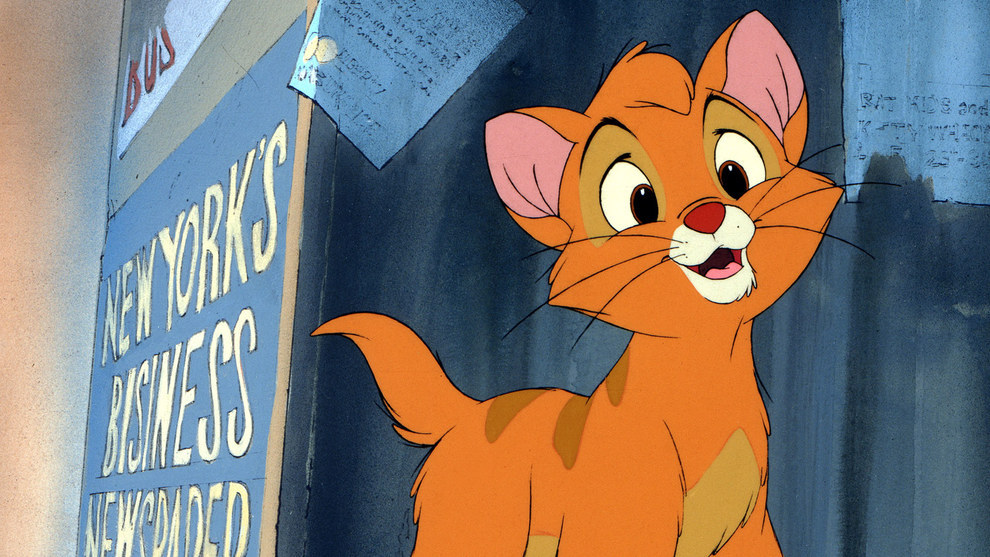
Walt Disney Animation Studios
Directed by: George Scribner
Written by: Jim Cox, Tim Disney, and James Mangold
In the tradition of Robin Hood, Oliver & Company takes a familiar story — here, it’s the Dickens novel Oliver Twist
— and recasts it with talking animals. It’s surprisingly effective.
Meek orphan Oliver becomes a kitten who finds himself in the world of
dog thieves led by Fagin, a human. (Thankfully, he’s no longer the
anti-Semitic character he was in the novel and several of its earlier
adaptations.) The depiction of New York City is impressively gritty,
which fits the subject matter and gives the film a bit of an edge for a
Disney movie. The music is also distinctive, but it works, in part
because of the voice talent involved: Huey Lewis sings the opening song,
Billy Joel voices Dodger and sings “Why Should I Worry,” and Bette
Midler steals the show as Georgette, who gets the iconic number “Perfect
Isn’t Easy.” At times, Oliver & Company feels a little too
dark — the “animals in peril” theme, a Disney classic, is pushed to its
limit here. This may be the only G-rated movie in which two dogs are
thrown from a train and electrocuted to death. They’re villains, but
still.Written by: Jim Cox, Tim Disney, and James Mangold
36. Treasure Planet (2002)
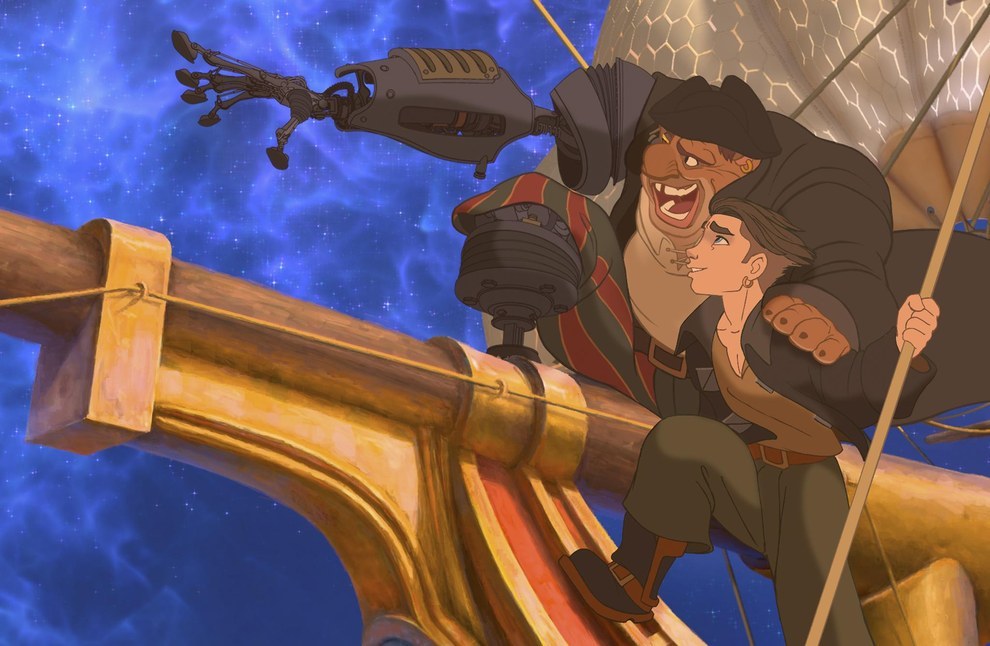
Walt Disney Animation Studios
Directed by: Ron Clements and John Musker
Written by: Ron Clements, John Musker, and Rob Edwards
Although Treasure Planet’s characters are drawn in
traditional 2D animation, they’re placed against 3D computer-generated
backgrounds. The combination of the old and the new result in a
thoroughly unique aesthetic, with stunning depth and fluid movements
through space. Treasure Planet is, above all, beautiful to look
at, and that makes up for areas where the film is lacking. As a sci-fi
interpretation of the classic adventure novel Treasure Island, the movie works best when it remains grounded with a strong focus on its characters and their motivations. To its detriment, Treasure Planet
sometimes gets too caught up in shiny robot parts, which distract from a
solid story. It might seem contradictory to praise the film’s
technological advancements while also calling for restraint, but the
best Disney movies showcase breathtaking animation without losing focus
of the rich emotional core. And indeed, when it centers on the
relationship between young Jim Hawkins and the cyborg John Silver, Treasure Planet can be quite powerful. Otherwise it gets a little lost in space.Written by: Ron Clements, John Musker, and Rob Edwards
35. Winnie the Pooh (2011)
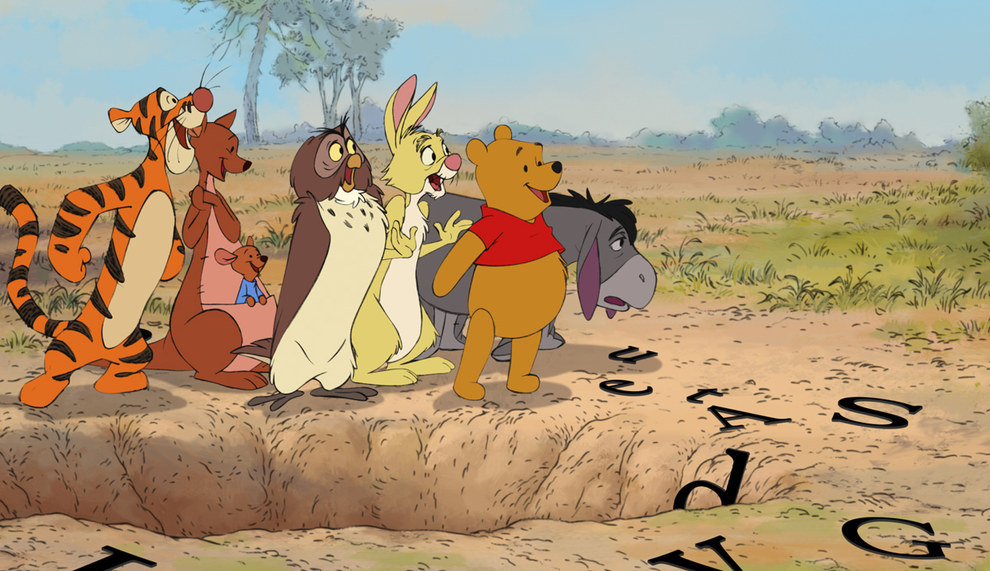
Walt Disney Animation Studios
Directed by: Stephen J. Anderson and Don Hall
Written by: Stephen J. Anderson, Clio Chiang, Don Dougherty, Don Hall, Brian Kesinger, Nicole Mitchell, Jeremy Spears, and Kendelle Hoyer
What’s amazing about Winnie the Pooh — the second Walt Disney Animation Studios adaptation of A. A. Milne’s Winnie the Pooh
stories — is how much it feels like it was made decades ago. The film
is designed to feel like a throwback, and it’s a remarkably effective
technique: Despite the occasional computer-animated assist (Pooh gets a
ramped-up fantasy sequence involving CGI honey), it looks an awful lot
like the 1977 original. And it’s not just the animation either. Winnie the Pooh
maintains a more traditional sensibility, with most of the sharp humor
deriving from wordplay and predictable misunderstandings, and songs that
would not feel out of place in the earlier film. In fact, the only time
Winnie the Pooh falters is when it allows too much of the
modern world to shine through in the form of slapstick humor and sight
gags that don’t align with Milne’s sensibility. If there’s another mark
against Winnie the Pooh, it’s the running length: At just over an hour — including the end credits — it’s almost too slight for a feature film.Written by: Stephen J. Anderson, Clio Chiang, Don Dougherty, Don Hall, Brian Kesinger, Nicole Mitchell, Jeremy Spears, and Kendelle Hoyer
34. Zootopia (2016)
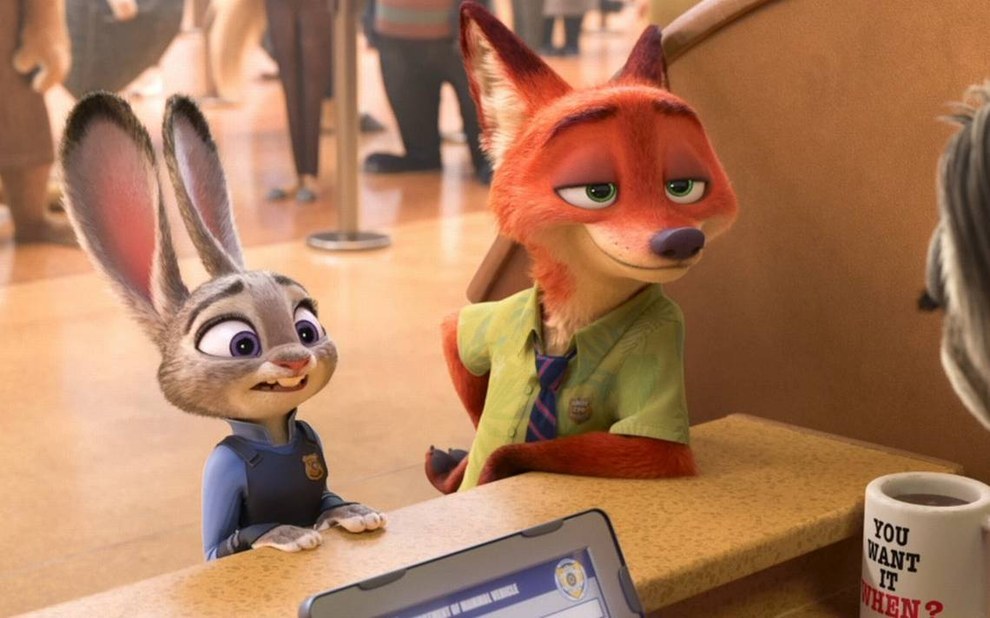
Walt Disney Animation Studios
Directed by: Byron Howard and Rich Moore
Written by: Jared Bush and Phil Johnston
Zootopia has its heart in the right place. But the buddy cop
mystery, which pairs up rabbit officer Judy Hopps and fox con artist
Nick Wilde, turns out to be a seriously unsubtle allegory about the
dangers of racial profiling. It’s an ambitious and laudable project,
particularly given the contemporary context (the Black Lives Matter
movement) and Disney’s less-than-favorable history of representing
people of color. That having been said, Zootopia’s metaphors are
muddled, at times to an alarming degree, e.g. the moral that prey should
not make assumptions about predators is undercut when the predators’
innate violent urges are exposed. To be fair, the film is careful to not
directly align any animals with a particular racial group, but the
association is still there, and it’s both uncomfortable and misguided.
Aside from that, it’s a fairly straightforward story with some notable
flourishes. (The idea that this is a world made by evolved animals, for
evolved animals, is a brilliant one.) It’s also wonderful to see a
female lead character who’s not motivated by true love but by her
passion for work. Still, Zootopia should have that distinctive Disney warmth and this one feels a little chilly.Written by: Jared Bush and Phil Johnston
33. Pocahontas (1995)
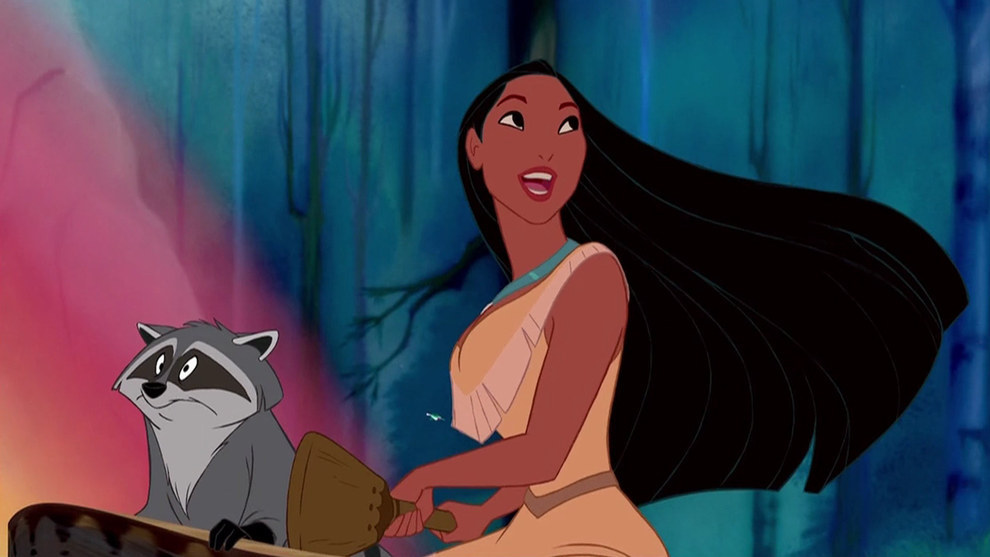
Walt Disney Animation Studios
Directed by: Mike Gabriel and Eric Goldberg
Written by: Carl Binder, Susannah Grant, and Philip LaZebnik
To say that Pocahontas is problematic is an understatement:
Disney’s historically inaccurate take on real-life Native American
Pocahontas and her relationship with English settler John Smith is, at
best, surface-level. At worst, it’s willfully ignorant, with
cringeworthy songs like “Savages,” in which the white men’s brutal
destruction of the native population is unfairly aligned with the
latter’s attempts to defend themselves against the onslaught of
outsiders. If you can overlook all that — and that’s not to say you
should — Pocahontas is actually rather beautiful, with some of
the decade’s best animation and a pleasant score, including standout
song “Colors of the Wind,” performed by Broadway star Judy Kuhn. The
story is overly simplistic and tough to swallow — Pocahontas learns
English because magic! — but it’s at least more complex than it could
have been. The scene where Thomas shoots and kills Kocoum reflects the
harsh realities of the situation, and the ending, in which Pocahontas
stays behind instead of leaving with John Smith, is a satisfying if not
traditionally happy conclusion.Written by: Carl Binder, Susannah Grant, and Philip LaZebnik
32. Sleeping Beauty (1959)
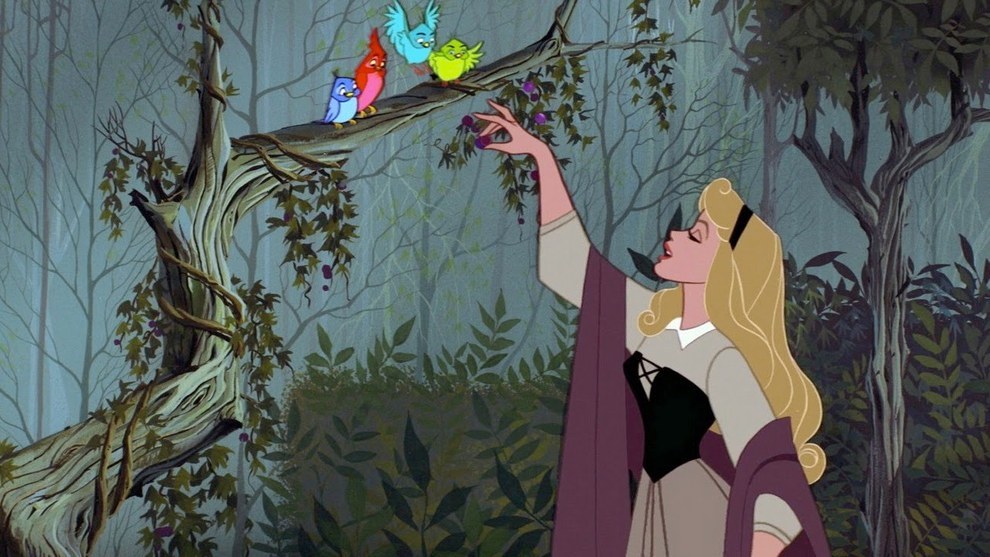
Walt Disney Animation Studios
Directed by: Clyde Geronimi, Les Clark, Eric Larson, and Wolfgang Reitherman
Written by: Erdman Penner, Joe Rinaldi, Winston Hibler, Bill Peet, Ted Sears, Ralph Wright, and Milt Banta
Sleeping Beauty is one of the Disney classics that benefits from retroactive appreciation. The live-action Maleficent, starring Angelina Jolie as the most interesting character from the animated film, offers a depth and backstory that makes Sleeping Beauty
look better in retrospect. By itself, however, the film is actually
sort of slow and flimsy. The pacing is all off: It’s 50 minutes into the
75-minute film before Princess Aurora even pricks her finger on the
cursed spinning wheel. To be fair, what follows is a breathtaking
climax, including an incredible battle — featuring Maleficent
transformed into a dragon — and eye-capturing animation that recalls
medieval art with its bright colors and highly stylized form. If Aurora
isn’t the most interesting Disney Princess (the most notable thing she
does is fall asleep), she’s surely one of the most beautiful, which does
account for the film’s lasting appeal. As a purely visual experience,
it’s a joy to take in.Written by: Erdman Penner, Joe Rinaldi, Winston Hibler, Bill Peet, Ted Sears, Ralph Wright, and Milt Banta
31. The Rescuers (1977)
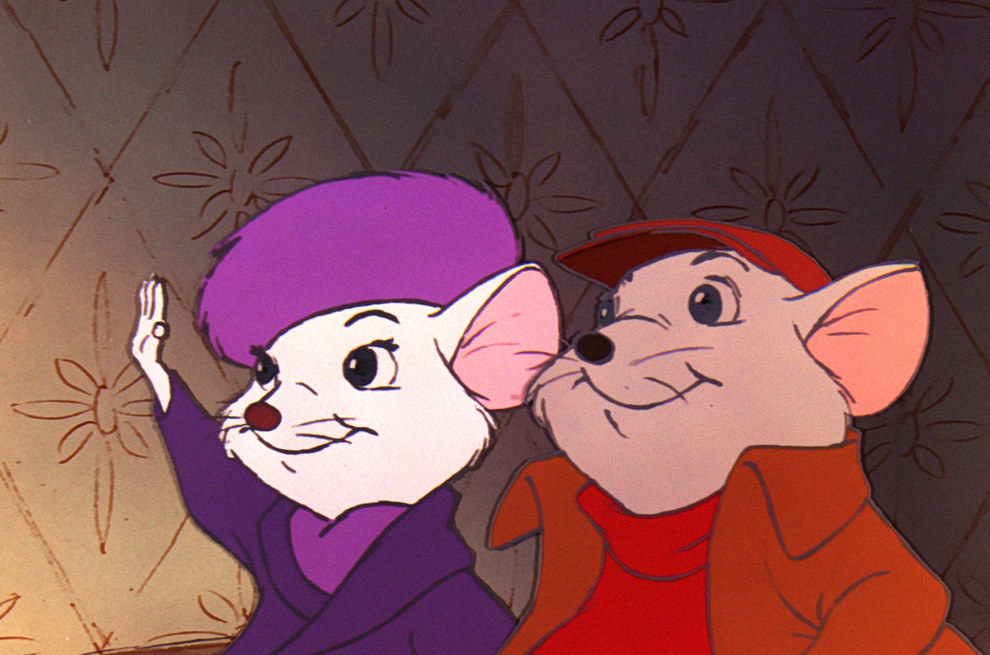
Walt Disney Animation Studios
Directed by: Wolfgang Reitherman, John Lounsbery, and Art Stevens
Written by: Larry Clemmons, Vance Gerry, Ken Anderson, Frank Thomas, Burny Mattinson, Fred Lucky, Dick Sebast, and Dave Michener
The success of The Rescuers is a credit to its excellent
characters, the unlikely duo of experienced Miss Bianca and nervous
Bernard, cruel Madame Medusa (originally intended to be Cruella De Vil
but reconceived as an original character), plucky orphan Penny, and
albatross pilot Orville. The story is fairly dark, with Medusa
kidnapping Penny and taunting her that she’s too homely to be adopted.
(Try watching the number “Someone’s Waiting for You” without getting
emotional. The cameo from Bambi and his mother doesn’t help.) But
there’s also plenty of comic relief in the form of Bernard and Bianca,
plucky agents of the Rescue Aid Society, the United Nations–esque mouse
organization. The film does an admirable job of blending action, humor,
and heart, culminating in a moving ending that gives all the characters
what they deserve without feeling too neat. It’s the action that’s
perhaps most impressive, if only because it’s something Disney films had
fumbled in the past: In The Rescuers, it’s constant and appropriately tense. The stakes are high enough to keep viewers on the edge of their seats.Written by: Larry Clemmons, Vance Gerry, Ken Anderson, Frank Thomas, Burny Mattinson, Fred Lucky, Dick Sebast, and Dave Michener
30. The Many Adventures of Winnie the Pooh (1977)
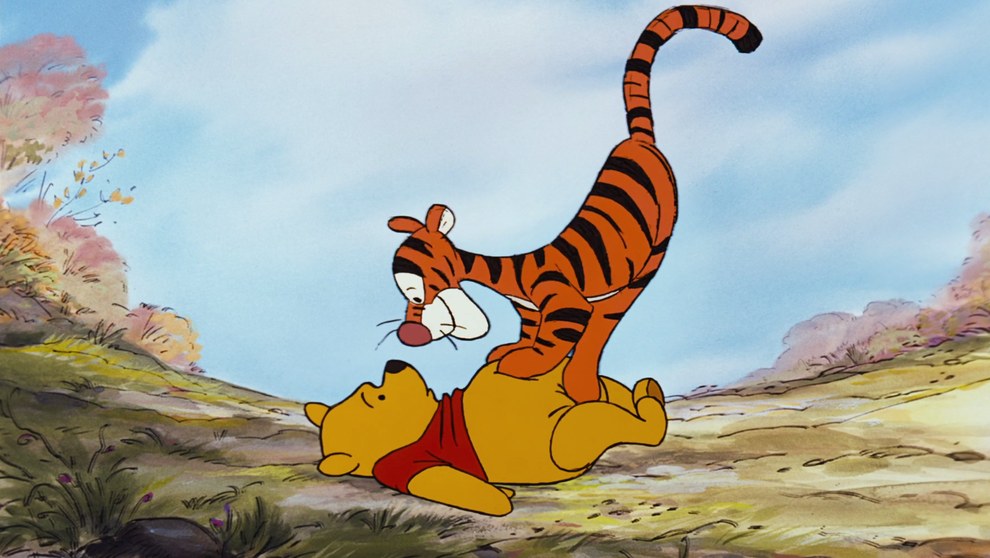
Walt Disney Animation Studios
Directed by: John Lounsbery and Wolfgang Reitherman
Written by: Larry Clemmons, Ralph Wright, Vance Gerry, Xavier Atencio, Ken Anderson, Julius Svendsen, Ted Berman, and Eric Cleworth
Though not a package film (thankfully), The Many Adventures of Winnie the Pooh
is stitched together from three different short films, with added
material to help bridge the gaps between them. It’s not always seamless —
the voice of Christopher Robin changes throughout, quite dramatically,
but somehow it’s not really bothersome. There is such a sweetness and
simplicity to Winnie the Pooh and these characters, it doesn’t
really matter that the film as a whole lacks cohesion. Of course, for
anyone who grew up with Pooh, Piglet, Eeyore, and the other inhabitants
of the Hundred Acre Wood, it’s difficult to rate their adventures
objectively. The nostalgia factor is strong here. So while The Many Adventures of Winnie the Pooh
might prove shrugworthy for someone who’s never been exposed to it
before, those who have even a passing familiarity with the stories or
the many films and TV series can’t help but be charmed by what is surely
the best adaptation of the source material. This is, after all, the
introduction of Tigger and the harrowing “Heffalumps and Woozles”
sequence.Written by: Larry Clemmons, Ralph Wright, Vance Gerry, Xavier Atencio, Ken Anderson, Julius Svendsen, Ted Berman, and Eric Cleworth
29. The Rescuers Down Under (1990)
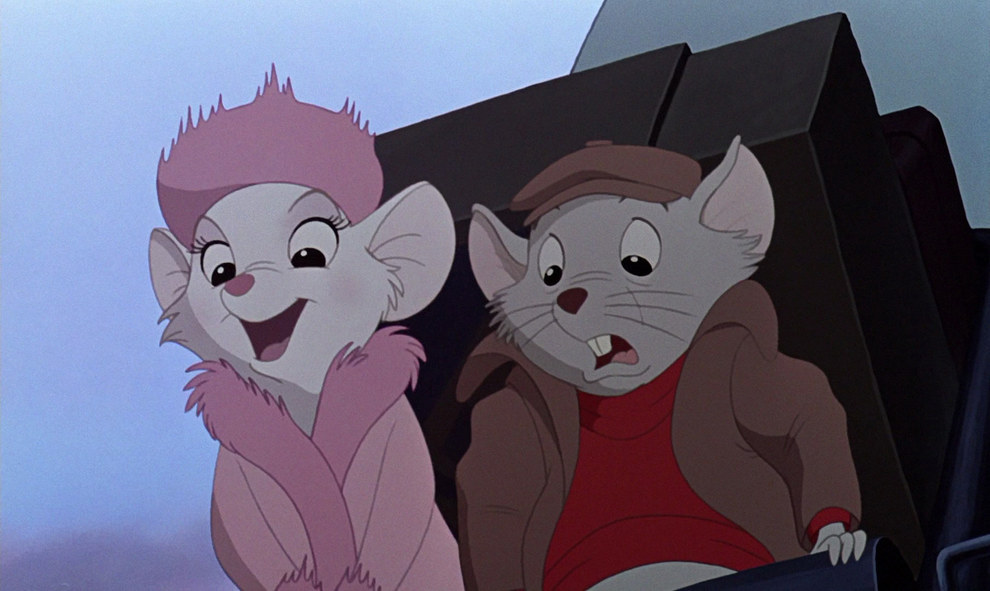
Walt Disney Animation Studios
Directed by: Hendel Butoy and Mike Gabriel
Written by: Jim Cox, Karey Kirkpatrick, Byron Simpson, and Joe Ranft
Bernard and Miss Bianca returned in The Rescuers Down Under, the first Walt Disney Animation Studios sequel to another film in the canon. Unlike the vast majority of sequels, The Rescuers Down Under
improves on its predecessor with stronger animation, more developed
characterization, and an even tenser, action-driven story. Perhaps the
only reason the film isn’t better regarded is that it emerged during the
Disney Renaissance, which had begun the previous year with The Little Mermaid. And compared to the rest of the films made during that time, The Rescuers Down Under
falls a little short. Frankly, it’s sort of unfair to hold an otherwise
delightful film to that nearly impossible standard. Aside from Bob
Newhart and Eva Gabor, who reprise their roles as Bernard and Bianca,
John Candy also joins the cast for the memorable role of albatross
Wilbur, the brother of Orville from the first film. He gets some of the
best scenes and adds enough comic relief to counter the stress of the
main plot, in which a poacher kidnaps a young boy named Cody to capture a
giant golden eagle.Written by: Jim Cox, Karey Kirkpatrick, Byron Simpson, and Joe Ranft
28. Hercules (1997)
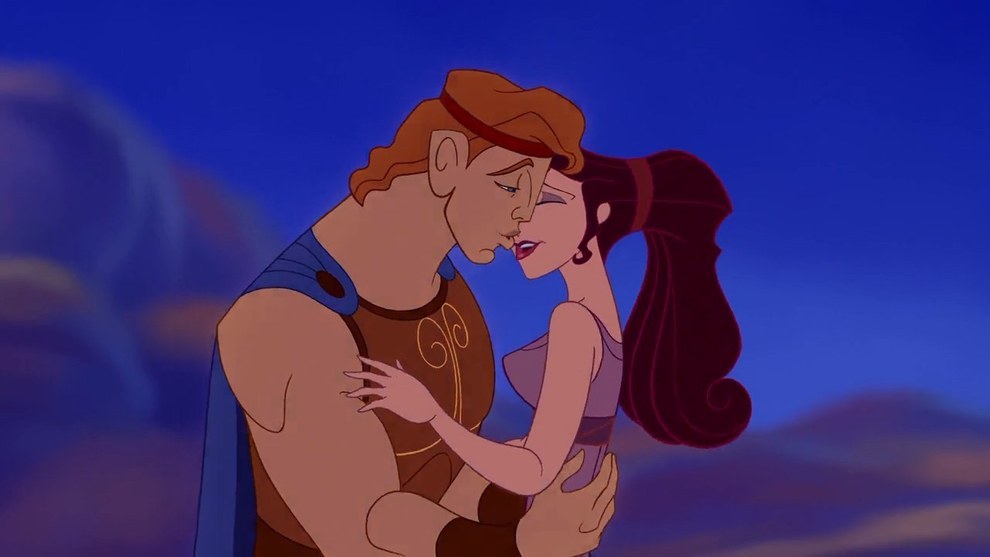
Walt Disney Animation Studios
Directed by: Ron Clements and John Musker
Written by: Ron Clements, John Musker, and Barry Johnson
If you know anything about Greek mythology, Hercules is
somewhat perplexing. It’s a muddled adaptation of classic myths, in
which Hades is recast as the villain simply because he has the
misfortune of ruling over the Underworld. Luckily, there’s still a lot
to like. Hercules is an interesting character — he’s generally good, but
once he finds fame, he begins to feel the burden of celebrity. Zeus is
forced to intervene and admonish his son for resting on his laurels. And
Megara is far from the typical Disney Princess: She spends much of the
film secretly working for Hades against her will, which imbues her with
rare moral ambiguity. The music is fun and has a distinctly gospel flair
— something Disney hadn’t explored up to this point — when the Muses,
the film’s narrators, are involved. The biggest mark against Hercules
is the animation, which is exaggerated and cartoony, giving the movie a
more juvenile feel despite the intense action sequences. Even worse is
the CGI Hydra, which is rendered with then state-of-the-art technology
that now looks awkward and amateurish.Written by: Ron Clements, John Musker, and Barry Johnson
27. One Hundred and One Dalmatians (1961)
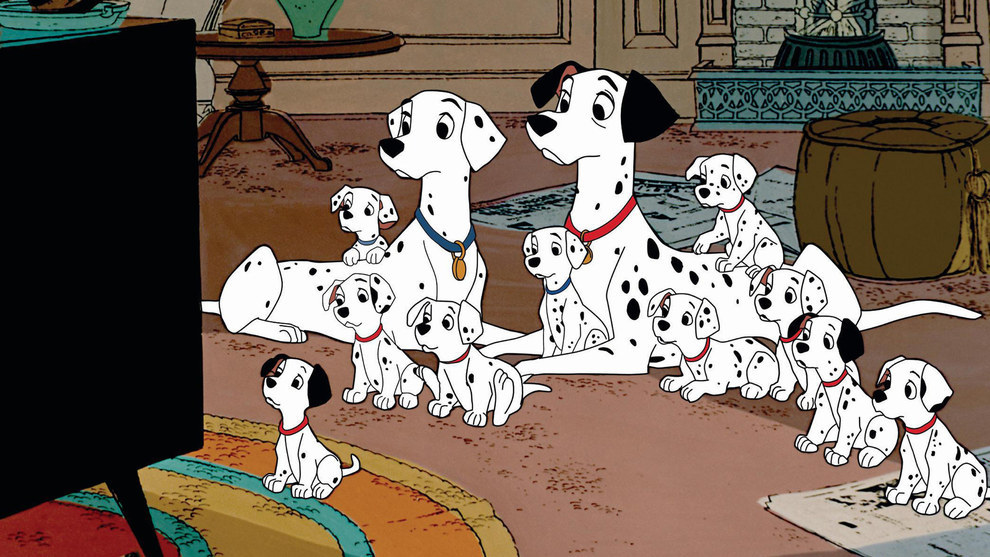
Walt Disney Animation Studios
Directed by: Clyde Geronimi, Hamilton Luske, and Wolfgang Reitherman
Written by: Bill Peet
The focus of One Hundred and One Dalmatians is on the title
dogs, led by parents Pongo and Perdita. (Pongo thinks of his owner Roger
as his pet and sets about finding him a mate, Perdita’s owner Anita.)
But Cruella De Vil is iconic: She’s one of Disney’s most well-known
villains, thanks to her distinctive design, wretched behavior (she wants
to murder and skin puppies), and that song. “Cruella De Vil” is the
only real song in One Hundred and One Dalmatians, but it’s
memorable enough to make up for the general absence of music. Cruella is
thoroughly frightening, and watching her ruthlessly pursue the dogs
makes the film an unbearably stressful experience at times. Naturally,
they survive — even Disney wouldn’t be that cruel — thanks to the
“Twilight Bark” that Pongo and Perdita use to communicate with other
dogs in London. It’s immensely satisfying to see the animals working
together to save the puppies’ hides. And it’s all animated with a
wonderfully stylized ’60s feel that keeps One Hundred and One Dalmatians fun even when you’re on the edge of your seat.Written by: Bill Peet
26. Meet the Robinsons (2007)
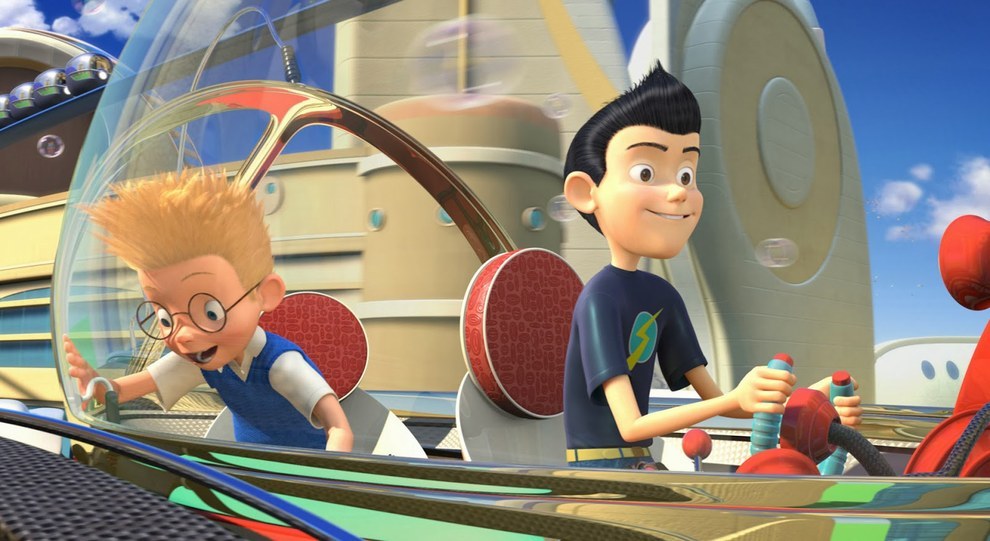
Walt Disney Animation Studios
Directed by: Steve Anderson
Written by: Jon A. Bernstein, Michelle Spritz, and Nathan Greno
Meet the Robinsons is a zany sci-fi comedy that packs a
surprising emotional punch. It catches you off guard with its beautiful
themes and tear-jerking ending, but that’s what Disney so often does
best. Before that, however, Meet the Robinsons is notable for
its detailed and fully realized depiction of the world in 2037. At its
center are Lewis, a young inventor left at an orphanage, and Wilbur
Robinson, who arrives from the future and introduces Lewis to the
eccentric Robinson family. There are too many characters to really keep
track of, but that doesn’t matter — what’s important is that the
Robinsons, for all their oddness and personality quirks, stick together
as a family when it counts. (Like, for example, when a dinosaur
attacks.) The reveal of Lewis’s true identity is a little obvious, but
it’s still a wonderful twist that plays out in a powerful conclusion. If
you don’t start crying when Lewis ventures back in time to see his
birth mother and then makes the touching sacrifice not to reach out to
her, you’re as soulless as Doris, the evil robotic bowler hat.Written by: Jon A. Bernstein, Michelle Spritz, and Nathan Greno
25. Snow White and the Seven Dwarfs (1937)
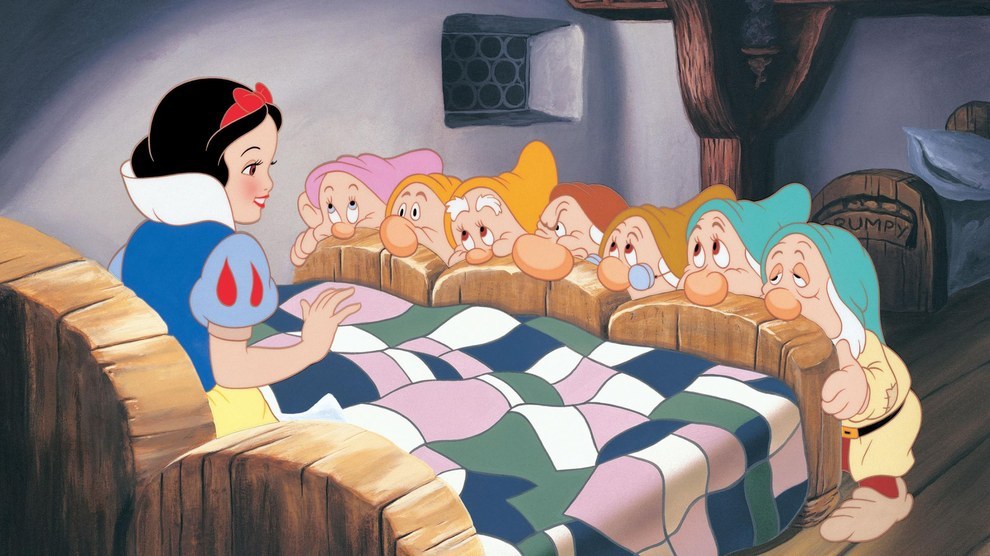
Walt Disney Animation Studios
Directed by: David Hand, William Cottrell, Wilfred Jackson, Larry Morey, Perce Pearce, and Ben Sharpsteen
Written by: Ted Sears, Richard Creedon, Otto Englander, Dick Rickard, Earl Hurd, Merrill De Maris, Dorothy Ann Blank, and Webb Smith
Because it was the very first film produced by Walt Disney Animation Studios, Snow White and the Seven Dwarfs
will always be beloved — its influence is incalculable. If the film,
which went against conventional wisdom at the time, hadn’t been a hit,
it’s unlikely that the many films that followed would have happened. So
credit where credit’s due: Snow White had a tremendous
influence on Disney and on animation as a whole. That having been said,
some parts of it work better than others. The scary elements — Snow
White lost in the forest and the Evil Queen’s transformation into an old
hag — are the most effective. Too much time is spent on the antics of
the dwarfs, with long drawn-out scenes of domesticity as Snow White
takes on a matriarchal role. The romance between Snow White and her
prince is basically nonexistent (he just shows up at the end to kiss her
awake), but the song “Someday My Prince Will Come” remains a standard
for a reason.Written by: Ted Sears, Richard Creedon, Otto Englander, Dick Rickard, Earl Hurd, Merrill De Maris, Dorothy Ann Blank, and Webb Smith
24. The Emperor’s New Groove (2000)
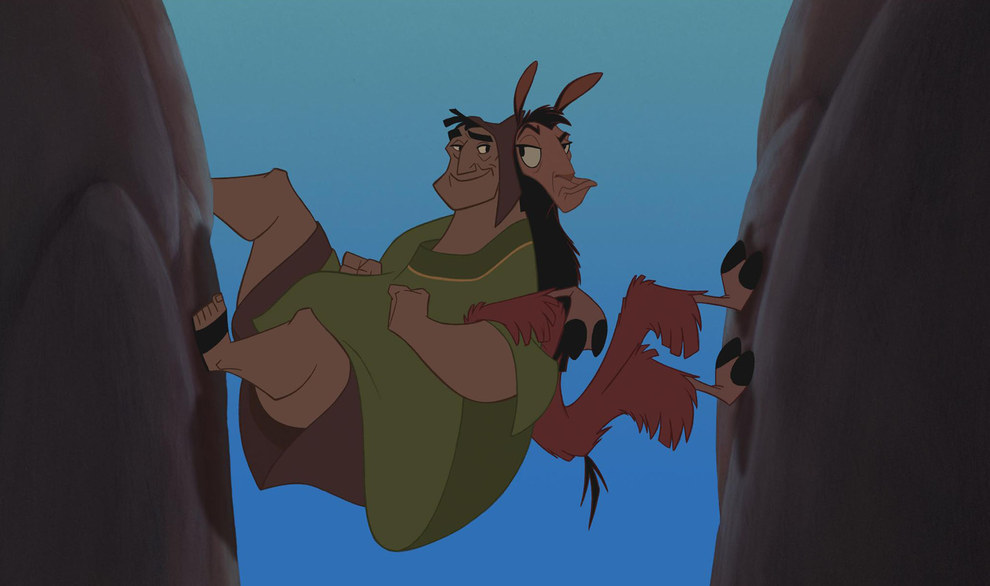
Walt Disney Animation Studios
Directed by: Mark Dindal
Written by: David Reynolds
At one point, The Emperor’s New Groove was a completely different movie. It was first developed as an epic musical, Kingdom of the Sun, with a score by Sting. How that turned into a lighthearted buddy comedy is the subject of the documentary The Sweatbox — but that’s neither here nor there. Regardless of how great Kingdom of the Sun might have been, The Emperor’s New Groove
is a lot of fun in its own right. It’s one of those rare children’s
movies that’s effortlessly hilarious for adults as well: Standout
characters Yzma and her henchman Kronk, voiced by the great Eartha Kitt
and Patrick Warburton, respectively, get most of the laughs, but there’s
plenty of humor to be mined from the relationship between
emperor-turned-llama Kuzco and peasant Pacha. The story proceeds about
as you’d expect, with the requisite lessons learned, but the characters
and jokes are strong enough to keep the audience entertained.Written by: David Reynolds
23. Tangled (2010)
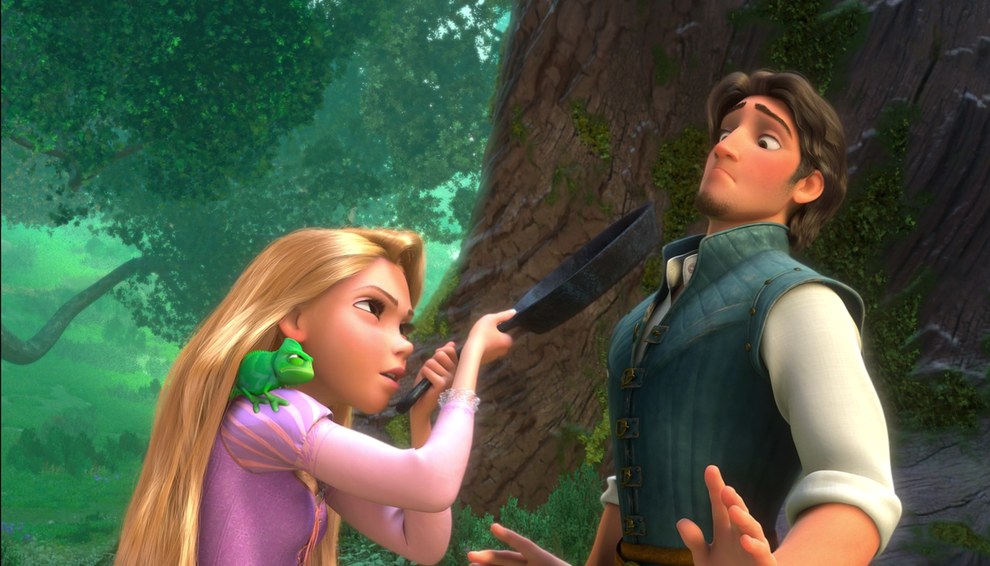
Walt Disney Animation Studios
Directed by: Nathan Greno and Byron Howard
Written by: Dan Fogelman
Like The Princess and the Frog and Frozen, Tangled
takes a traditional fairy tale and subverts it. Here, Rapunzel has a
complicated relationship with her captor, Mother Gothel, and her
“prince” is actually the thief Flynn Rider (real name: Eugene
Fitzherbert). Most importantly, Rapunzel is transformed from the passive
victim of the original story to a veritable action hero who uses both
her cunning and her hair to save the day. There are a couple exceptional
songs along the way, including “Mother Knows Best” (sung by Broadway
star Donna Murphy as Mother Gothel) and “I See the Light,” a romantic
duet between Rapunzel and Eugene. As with some of the other recent
Disney musicals, the biggest problem with Tangled is the
pacing: These films tend to be front-loaded with songs and then spend
too much time on straight action. The ending is also a little
disappointing: Mother Gothel is quickly dispatched without much grief
from Rapunzel. It’s a weak conclusion to the complicated relationship
the film sets up from the beginning.Written by: Dan Fogelman
22. Wreck-It Ralph (2012)
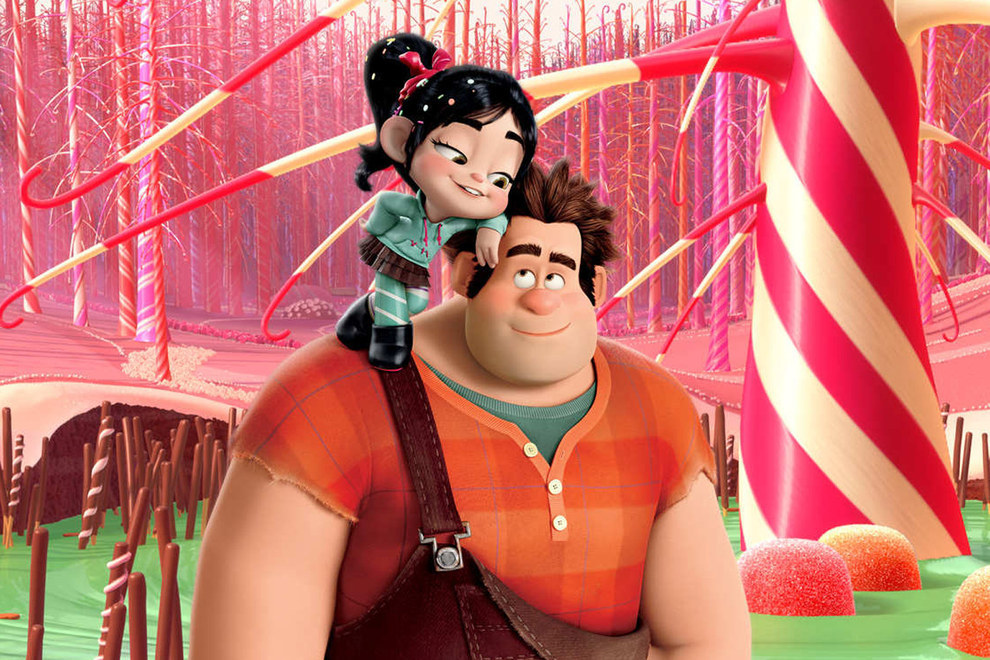
Walt Disney Animation Studios
Directed by: Rich Moore
Written by: Phil Johnston and Jennifer Lee
Wreck-It Ralph is a brilliant concept: An arcade game
villain who dreams of becoming a hero travels to other games in his
quest for glory. It’s a hilarious and sharp look at video games, filled
with ample wit and plenty of cameos. (Mario never actually shows up,
although he’s talked about, but Bowser gets some screen time.) The bulk
of the film is spent in the Mario Kart–style racing game Sugar Rush, where Ralph connects with a glitch named Vanellope. It’s a little disappointing that Wreck-It Ralph
doesn’t spend more time exploring the world it’s created, but there’s
room for more of that in the planned sequel. And that’s only a minor
quibble given how successful the film is otherwise. The voice talent is
especially great: John C. Reilly is Ralph, Sarah Silverman is Vanellope,
and Alan Tudyk does an uncanny impression of Ed Wynn (the Mad Hatter in
Alice in Wonderland) in order to portray the villainous King Candy. Wreck-It Ralph
is sweet and richly detailed, but because there’s so much material the
writers could have mined from the arcade setting, it leaves you wanting a
little more.Written by: Phil Johnston and Jennifer Lee
21. Big Hero 6 (2014)
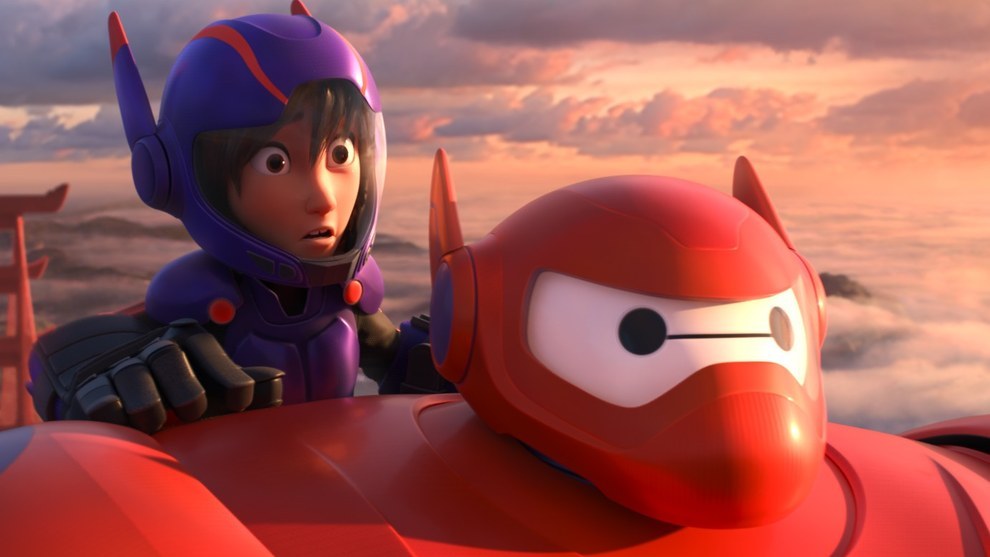
Walt Disney Animation Studios
Directed by: Don Hall and Chris Williams
Written by: Jordan Roberts, Dan Gerson, and Robert L. Baird
First things first: Big Hero 6 is absolutely gorgeous. It is
a stunning achievement in animation. The city of San Fransokyo, a
combination of San Francisco and Tokyo, is a breathtaking backdrop for
the action, which centers around a boy named Hiro forming a superhero
team with Baymax, the robot his late brother Tadashi left behind.
Animation aside, Big Hero 6 is a lot of fun to watch, and it
has plenty of heart. Like so many Disney classics, it features a
traumatic death early on — Tadashi is killed in an explosion at his
university — but it pays off with the catharsis that comes from Hiro
learning to let love back into his life, as he embraces Tadashi’s
friends and Baymax, who quite literally wants to heal Hiro. The story
itself is a little weak, if only because it’s essentially an origin
story, which we’ve seen time and time again. It would be more
interesting to see Hiro leading an established team — perhaps we’ll see
that in the sequel — or at least more of the group in action. By the
time they’ve formed a crime-fighting unit, Big Hero 6 is nearly over.Written by: Jordan Roberts, Dan Gerson, and Robert L. Baird
20. The Sword in the Stone (1963)
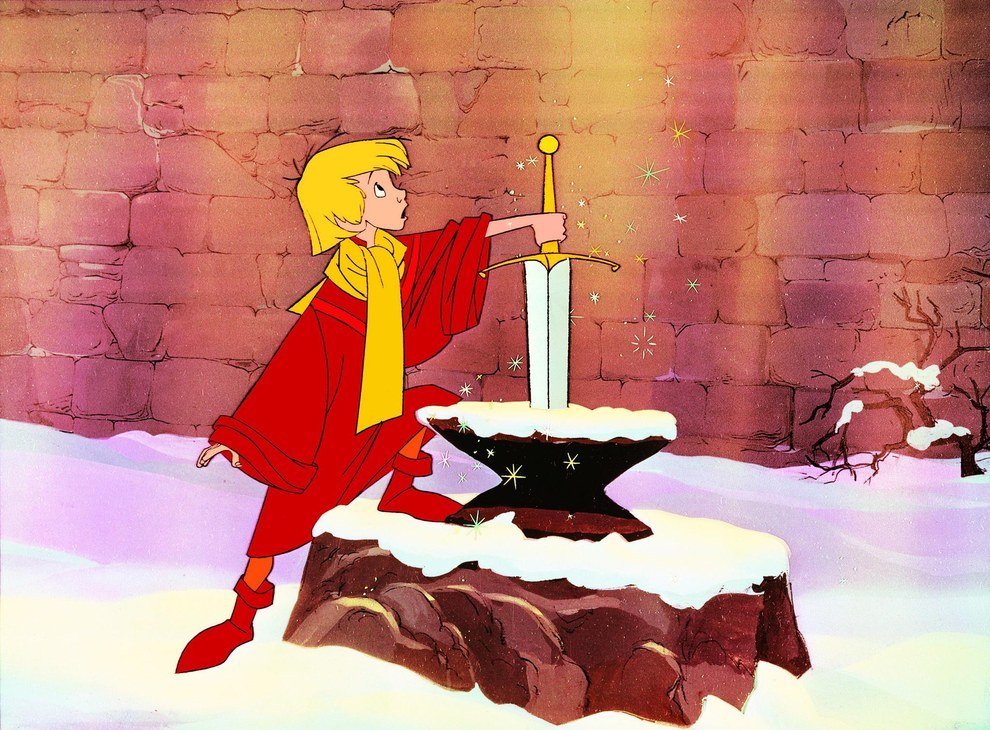
Walt Disney Animation Studios
Directed by: Wolfgang Reitherman
Written by: Bill Peet
The Sword in the Stone has a markedly unusual structure. Based on The Once and Future King
by T. H. White, which is itself based on Arthurian mythology, the film
tracks the mentorship of the orphan “Wart” (soon to be King Arthur) by
the wizard Merlin. The story doesn’t follow traditional beats. Instead,
it’s essentially a series of vignettes: Merlin turns Arthur into a fish,
then a squirrel, then a sparrow. Along the way, lessons are learned and
songs are sung. The Sword in the Stone could be criticized for
a lack of focus, but it’s frankly too enjoyable to question. Besides,
the themes are strong enough to link Arthur’s misadventures. Under
Merlin’s tutelage, Arthur learns about love and empathy — and that magic
can’t solve every problem. It’s surprisingly poignant, culminating in
the long-awaited moment when Arthur pulls the sword from the stone and
proves himself a worthy successor to the throne. It’s also very funny:
Although The Sword in the Stone takes place during Arthurian
times, Merlin can travel through time and enjoys confounding his
contemporaries with modern references.Written by: Bill Peet
19. The Great Mouse Detective (1986)
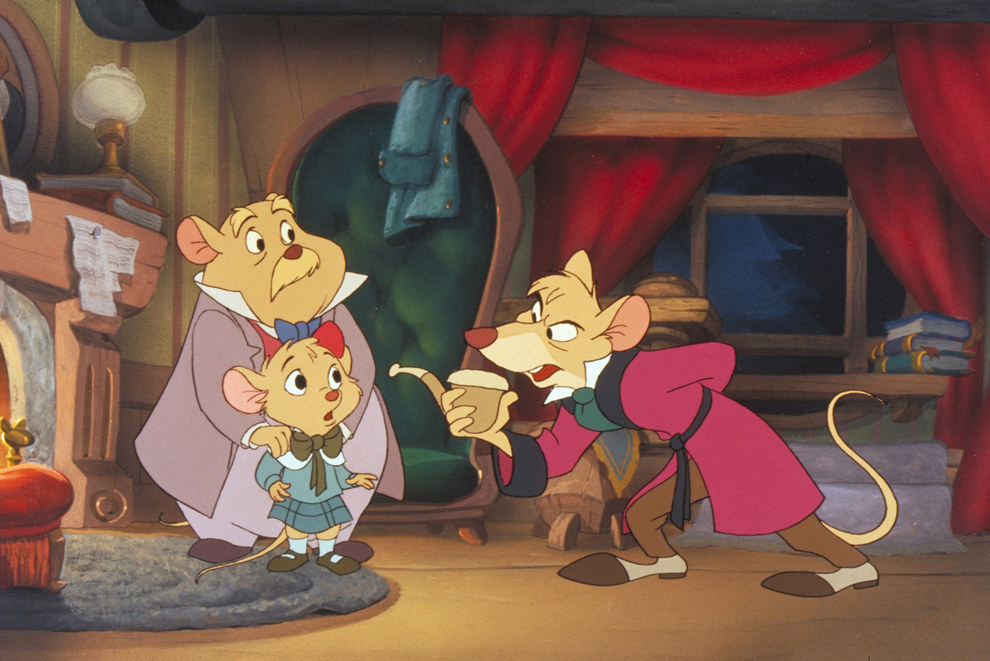
Walt Disney Animation Studios
Directed by: Ron Clements, Burny Mattinson, Dave Michener, and John Musker
Written by: Pete Young, Vance Gerry, Steve Hulett, John Musker, Ron Clements, Bruce Morris, Matthew O’Callaghan, Burny Mattinson, Dave Michener, and Mel Shaw
It’s sad that The Great Mouse Detective is so often
overlooked. Set in late 19th century London, the mystery follows the
Sherlock Holmes–inspired Basil of Baker Street, commissioned by Dr.
David Dawson to find the missing father of a young mouse named Olivia.
The characters are charming — they have distinctive personalities and
voices, not to mention English accents — and the plot is engaging. The
villain, Professor Ratigan, gets one of the best villain songs in Disney
history, the aptly named “The World’s Greatest Criminal Mind.” (Though,
let’s face it, the villain songs are almost always the best in any
given Disney film.) Perhaps The Great Mouse Detective is largely forgotten because it arrived between the disaster of The Black Cauldron
and the Disney Renaissance. But it’s certainly worthy of reappraisal.
Funny and captivating, it almost feels like the jumping-off point for a
series that never happened. Should Disney ever want to revisit Basil,
the book series that introduced him, written by Eve Titus, has plenty
more mysteries to choose from.Written by: Pete Young, Vance Gerry, Steve Hulett, John Musker, Ron Clements, Bruce Morris, Matthew O’Callaghan, Burny Mattinson, Dave Michener, and Mel Shaw
18. Atlantis: The Lost Empire (2001)
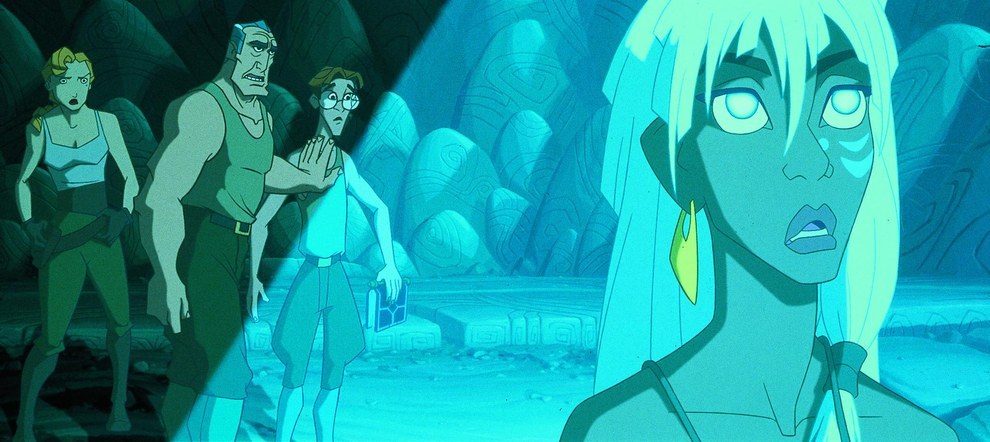
Walt Disney Animation Studios
Directed by: Gary Trousdale and Kirk Wise
Written by: Tab Murphy
You can’t overemphasize the amount of detail that went into Atlantis: The Lost Empire
— how many other Disney films can say they inspired an entire language?
(Atlantean was developed specifically for the film by linguist Marc
Okrand, who also created the Klingon language for Star Trek.) Atlantis: The Lost Empire
is a dynamic sci-fi adventure grounded in some very well-developed
characters and, naturally, a strong emotional core. Milo Thatch is a
dorky loser who also turns out to be a hero, and each member of his team
is granted distinctive characteristics and backstories that are
revealed throughout the film. The land of Atlantis is equally intricate,
as are its inhabitants, led by Milo’s romantic interest, Princess Kida.
In many respects, Atlantis is an old-fashioned adventure story, a throwback in the tradition of Indiana Jones
(if Indy were a total spaz). But it’s also aided by technology that
combines 2D animation (inspired by comic artist Mike Mignola) and more
CGI than had ever been used in a Disney film at that point. The
climactic fight for Atlantis is a sight to behold.Written by: Tab Murphy
17. Bolt (2008)
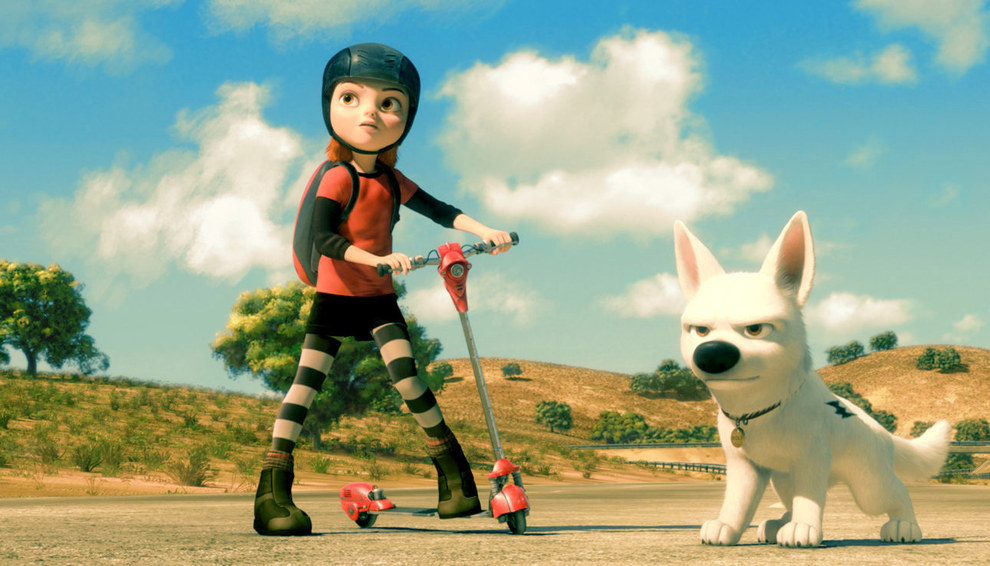
Walt Disney Animation Studios
Directed by: Chris Williams and Byron Howard
Written by: Dan Fogelman and Chris Williams
The way Bolt starts out, it looks like it’s going to be
another sci-fi adventure, like so many of Disney’s films in the first
decade of the 2000s. But the twist is that Bolt the dog only thinks
he’s a genetically modified superhero, when in fact he’s the star of a
popular TV series alongside his owner Penny. It’s a neat twist that
inspires a lot of humor (and some pathos) as Bolt escapes into the real
world and is forced to learn his own limitations the hard way. Most
Disney films have sidekicks, but Bolt has two of the most
memorable: Mittens, an alley cat voiced by Susie Essman, and Rhino, a
portly hamster trapped in a ball who’s voiced by Mark Walton. Despite
not being a professional actor, Walton turns in a performance that
elevates the film to new comedic heights. But, of course, Bolt
is also a moving story about the relationship between a dog and his
person: There’s no real villain here, just the distance separating Bolt
and Penny. Their inevitable reunion makes for a gorgeous and well-earned
conclusion. If that doesn’t make you cry, the Jenny Lewis song “Barking
at the Moon” will.Written by: Dan Fogelman and Chris Williams
16. Lilo & Stitch (2002)
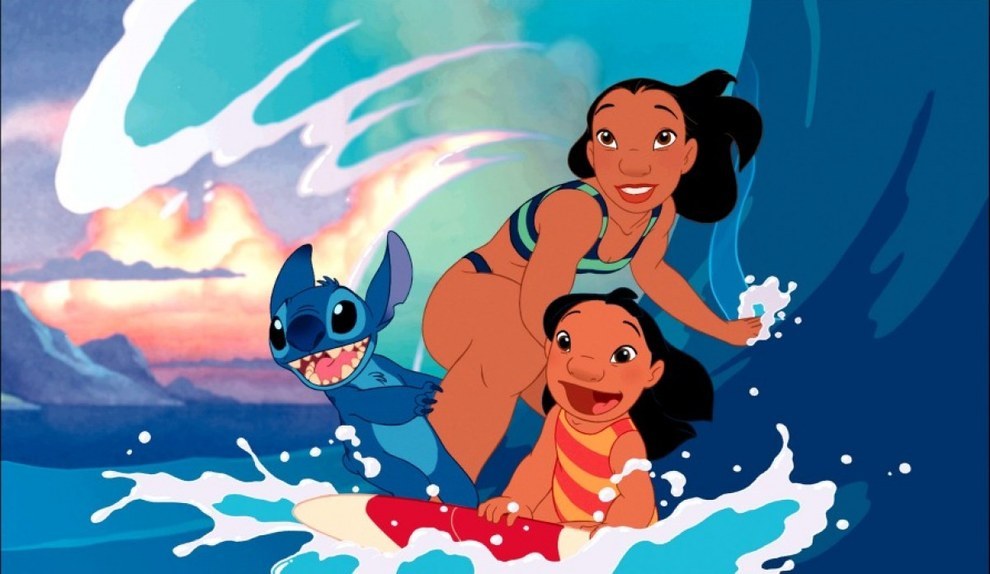
Walt Disney Animation Studios
Directed by: Chris Sanders and Dean DeBlois
Written by: Chris Sanders and Dean DeBlois
“Ohana means family. Family means no one gets left behind.” This oft-repeated line is thematically crucial not only to Lilo & Stitch
but to Disney as a whole. So many of the films on this list center on
the concept of chosen family, those you love and accept as your own
regardless of blood (or species). That idea is beautifully realized in Lilo & Stitch,
a deceptively mature film about a troubled little girl and her alien
pet. There’s a lot to love about the movie, from the unique watercolor
animation style (which also allows its characters to have curvy human
bodies instead of the unrealistic Disney Princess ideal) to the very
serious issues it addresses (Lilo’s sister Nani wants to keep her, but
the threat of foster care looms large). Because the image Lilo & Stitch
conjures is of a blue alien in a hula skirt, it’s easy to dismiss the
film as frivolous. But in fact, it’s the most thoughtful and moving of
the early 2000s Disney films. And with “ohana,” a word whose inclusion
reflects a commitment to authentically representing Hawaiian culture, we
have a term for a concept that has made Disney beloved for generations.Written by: Chris Sanders and Dean DeBlois
15. Bambi (1942)
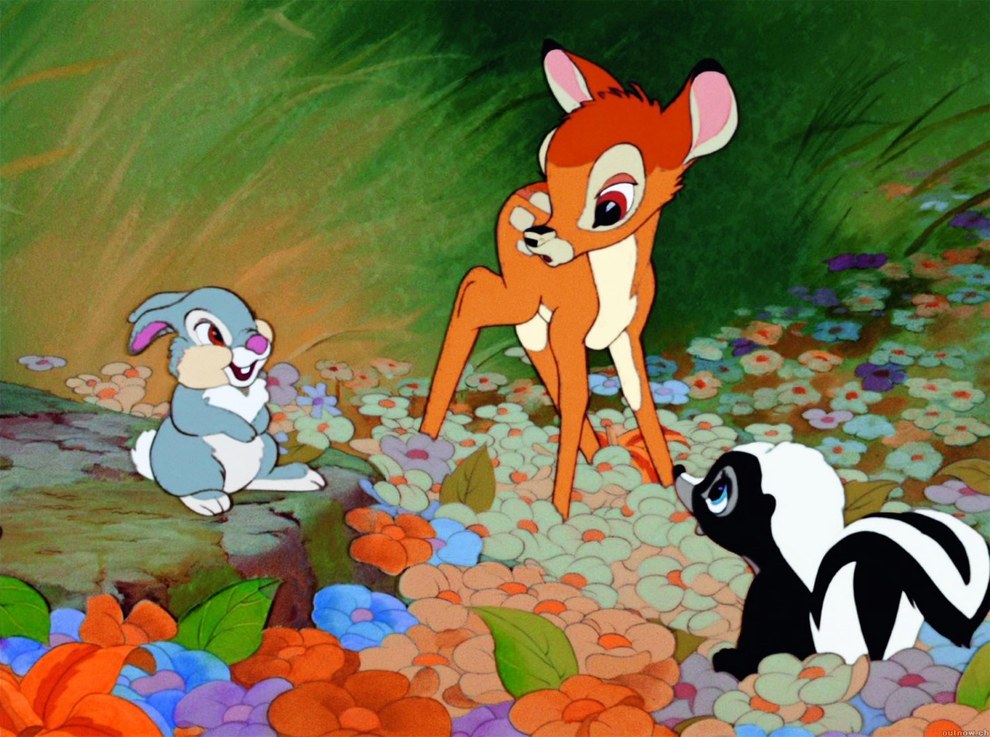
Walt Disney Animation Studios
Directed by: David Hand, James Algar, Samuel Armstrong, Graham Heid, Bill Roberts, Paul Satterfield, and Norman Wright
Written by: Perce Pearce, Larry Morey, Vernon Stallings, Melvin Shaw, Carl Fallberg, Chuck Couch, and Ralph Wright
What everyone remembers about Bambi is that Bambi’s mother dies, shot offscreen by a hunter. What fewer remember is that Bambi is a truly beautiful film. It’s simple, yes, but that works to its advantage. Without much of a plot, Bambi
is more about capturing feelings: the pain of loss, the excitement of
new love, the joy of rebirth. Bambi grows from youth to adulthood along
with his friends Thumper, a rabbit, and Flower, a skunk. Rather than
focus too much on the details, the film opts for a more stylized
approach. It’s surprisingly artful for an early Disney film: There’s
plenty of attention paid to color and light, all of which is
complemented by a lovely and occasionally haunting score. And yes, the
death of Bambi’s mother is important — it’s a moment that adults recall
watching as kids, when we lost a little bit of our innocence and learned
not only that we could lose a parent, but also that man is capable of
great evil. What Disney villain cast a more imposing shadow than that
unseen hunter?Written by: Perce Pearce, Larry Morey, Vernon Stallings, Melvin Shaw, Carl Fallberg, Chuck Couch, and Ralph Wright
14. Cinderella (1950)
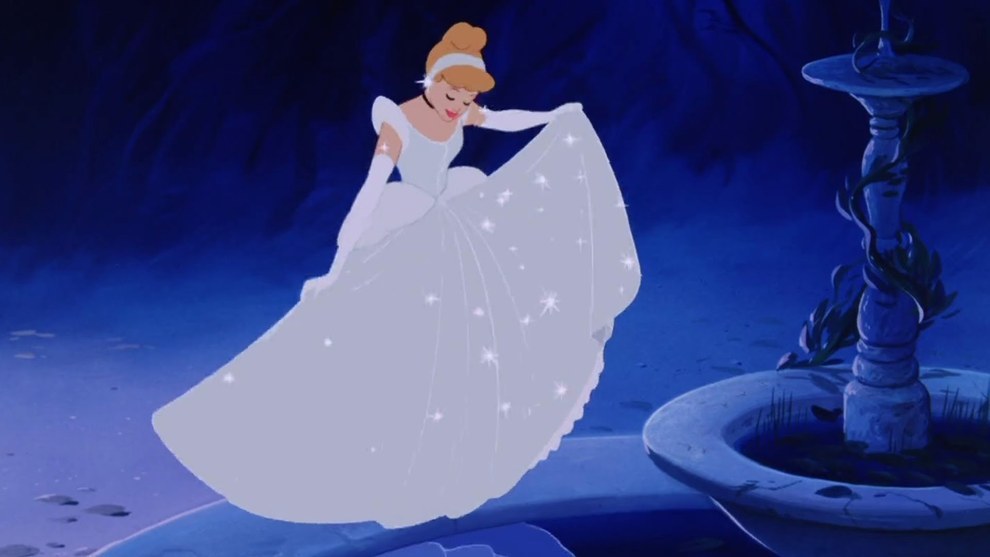
Walt Disney Animation Studios
Directed by: Clyde Geronimi, Hamilton Luske, and Wilfred Jackson
Written by: Ken Anderson, Perce Pearce, Homer Brightman, Winston Hibler, Bill Peet, Erdman Penner, Harry Reeves, Joe Rinaldi, and Ted Sears
Aside from the films of the Disney Renaissance, Cinderella
is the quintessential Disney fairy tale adaptation. It’s a fairly
straightforward take on the Cinderella story as told by French author
Charles Perrault. (There are countless other iterations of the tale,
including a version by the Brothers Grimm.) After the dreaded package
film era of the ’40s, Cinderella was a necessary example of
what Disney could do with animation: It tells a complete story with
memorable characters and catchy songs. It’s also terribly romantic. Even
if you reject the idea of love at first sight, you can’t help but swoon
at Cinderella and Prince Charming serenading each other with “So This
Is Love.” If there’s a complaint to be made about Cinderella
it’s that an awful lot of time is spent on the eponymous character’s
mouse friends. But that’s really a matter of taste — sorry, Gus Gus fans
— and it doesn’t take away from the simple satisfaction of watching the
glass slipper slide effortlessly onto Cinderella’s foot and earning her
the most Disney of all endings: a “happily ever after.”Written by: Ken Anderson, Perce Pearce, Homer Brightman, Winston Hibler, Bill Peet, Erdman Penner, Harry Reeves, Joe Rinaldi, and Ted Sears
13. Tarzan (1999)
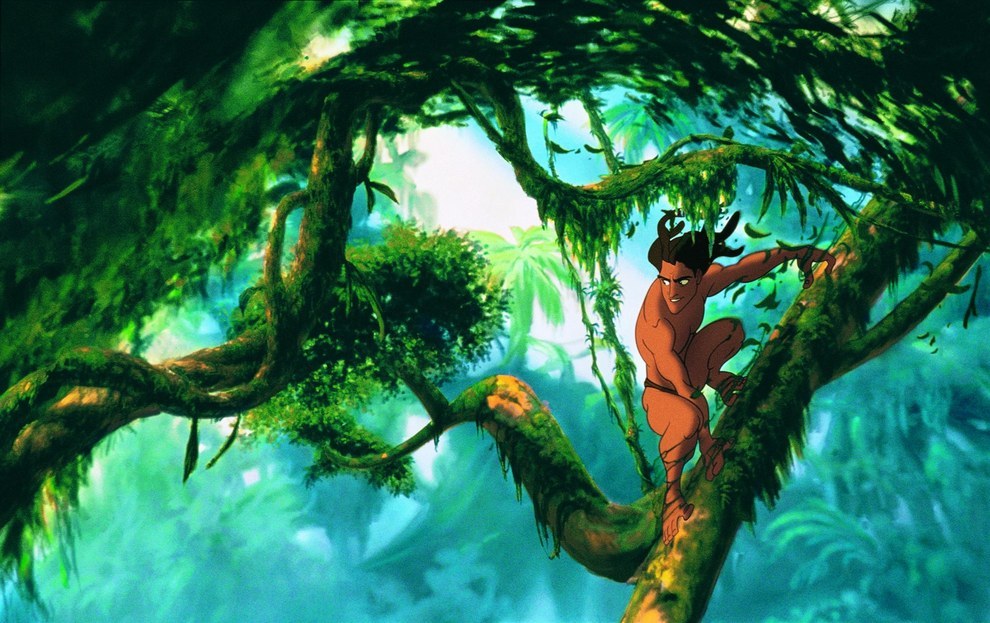
Walt Disney Animation Studios
Directed by: Kevin Lima and Chris Buck
Written by: Tab Murphy, Bob Tzudiker, and Noni White
In many ways, Tarzan doesn’t feel like other Disney films,
especially the Disney Renaissance movies of the ’90s. The Phil Collins
songs, in particular, seem like they belong more on a concept album than
in a Disney musical. And the story veers into dark terrain with some
shocking (albeit mostly bloodless) displays of violence. But at its
core, Tarzan is actually right at home among other Disney
classics. Tarzan himself isn’t dissimilar to Mulan: He’s a person who is
at odds with his surroundings. He is confounded by his own reflection.
Both stories teach the valuable lesson of not changing to fit in with
those who don’t understand you; in fact, Tarzan and Mulan encourage the
outside world to change to suit their needs instead. Tarzan
also showcases some of the very best animation of the time. The jungle
is richly detailed and displayed with impressive depth. Just as Tarzan
swings with ease from tree to tree, his movements are perfectly
captured. And because this is Disney, of course there are tears:
Kerchak’s death is sad, but it’s Kala showing Tarzan his birth family
that packs the real emotional punch.Written by: Tab Murphy, Bob Tzudiker, and Noni White
12. Lady and the Tramp (1955)
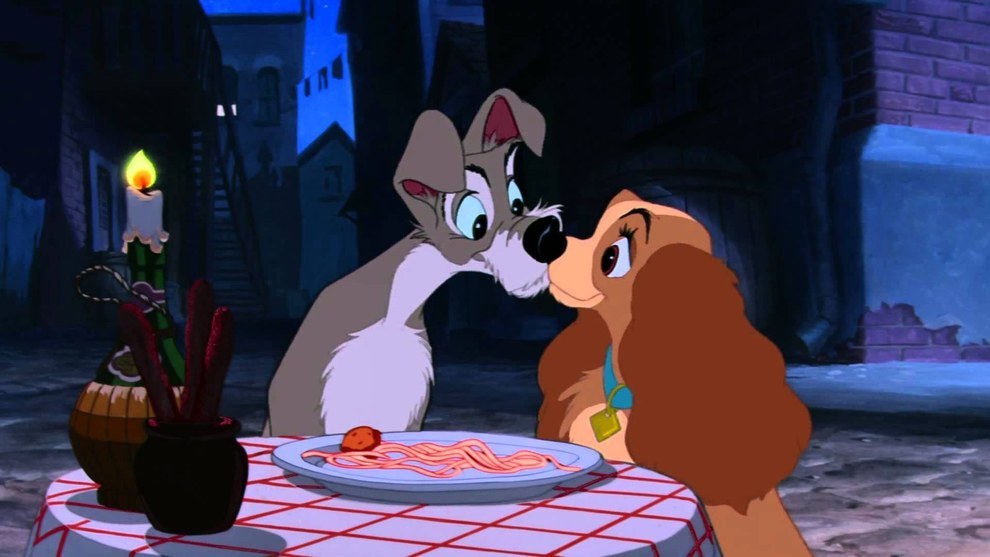
Walt Disney Animation Studios
Directed by: Clyde Geronimi, Wilfred Jackson, and Hamilton Luske
Written by: Erdman Penner, Joe Rinaldi, Ralph Wright, and Don DaGradi
As was often the case when they had to draw animals, Disney animators studied the real thing. For Lady and the Tramp,
they brought in several different dog breeds and learned to draw their
movements and expressions with exceptional detail. More than any other
animal-centric Disney film, Lady and the Tramp shows how
important these efforts were in creating authentic (and adorable)
characters. The strength of the film, otherwise a pretty simple love
story between dignified Lady and scrappy Tramp, is in how developed
these characters are. And it’s not just Lady and Tramp — there’s also
Jock the Scottish terrier, Trusty the bloodhound, and Si and Am the
Siamese cats. (The less said about “The Siamese Cat Song,” the better.)
Archaic racial stereotypes aside, Lady and the Tramp is
difficult not to fall in love with. The famous “Bella Note” scene, in
which the dogs are serenaded while sharing a plate of spaghetti and
meatballs, is as romantic as it ever was. Walt Disney originally worried
it would look silly. How wonderful that the animators were able to
prove him wrong.Written by: Erdman Penner, Joe Rinaldi, Ralph Wright, and Don DaGradi
11. Frozen (2013)

Walt Disney Animation Studios
Directed by: Chris Buck and Jennifer Lee
Written by: Jennifer Lee
Frozen is an unprecedented phenomenon. It has blown up for
Disney in a way that no one ever could have expected. It’s also very
recent, which makes it tougher to view with perspective. But here’s the
thing about Frozen: As easy as it is to make it a punchline (or
to parody “Let It Go,” as hundreds of YouTube videos can attest), it
was successful for a reason. Like Tangled and The Princess and the Frog before it, Frozen
subverts a traditional fairy tale with maturity, humor, and — dare I
say it? — feminism. The fact that true love’s kiss, that all-purpose
fairy tale curse-breaker, is the kiss between two sisters is a pretty
radical departure from standard Disney fare. Elsa and Anna are granted a
complexity that the female characters before them were rarely afforded.
More importantly, they’re the center of their own universes: Romance,
though present, is an afterthought. As was the case with Tangled, Frozen
suffers a bit by front-loading itself with all the best songs, but
because they’re really great songs, it’s easier to forgive. (Think back
to when you heard “Let It Go” the first time, not the 8,000th.)Written by: Jennifer Lee
10. The Jungle Book (1967)
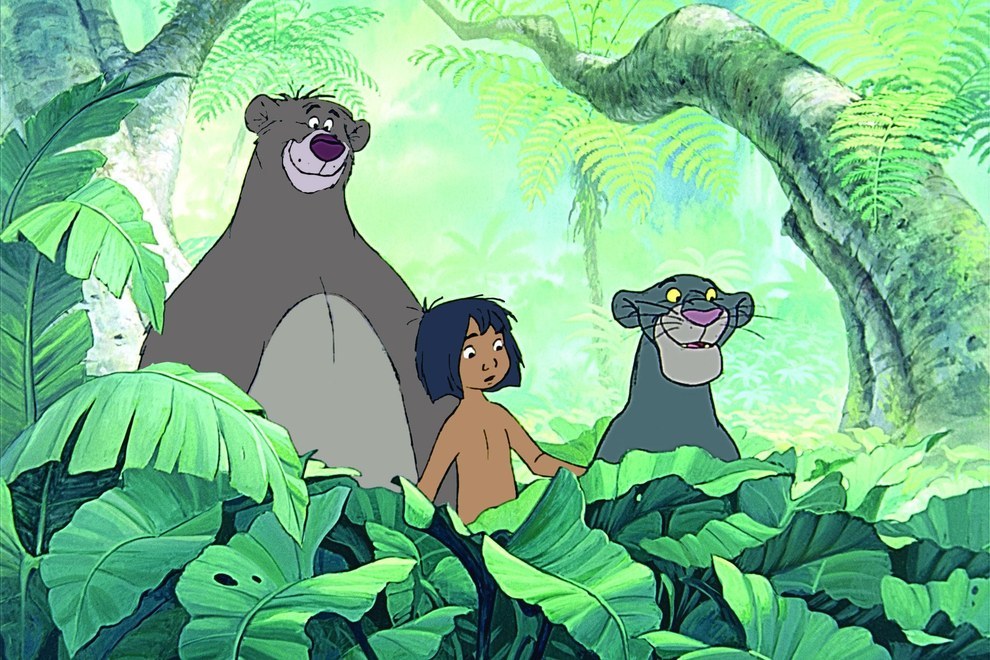
Walt Disney Animation Studios
Directed by: Wolfgang Reitherman
Written by: Larry Clemmons, Ralph Wright, Ken Anderson, and Vance Gerry
Before Tarzan there was The Jungle Book. The Jungle Book
is significantly lighter than its thematic cousin: Mowgli is just a
child, and while he’s frequently in peril, he manages to escape
completely unscathed. (Baloo, Mowgli’s lovable bear companion, is
seriously injured by the tiger Shere Khan, but he pulls through after a
genuinely stressful moment of uncertainty.) The Jungle Book
offers a lot of what Disney does best — it blends the realistic with the
cartoonish, the darkness of the jungle with a lighthearted tone, and
linear storytelling with an aimless quality that allows for some
charming diversions. Once again, the animals have distinctive
personalities that take their animal characteristics into account while
also embracing the human actors voicing them. There are five songs by
the legendary Sherman Brothers, two of which are truly wonderful: “I
Wanna Be Like You,” sung by Louis Prima as King Louie the orangutan, and
Baloo’s “The Bare Necessities.” Trying to get the latter out of your
head is an exercise in futility.Written by: Larry Clemmons, Ralph Wright, Ken Anderson, and Vance Gerry
9. Pinocchio (1940)
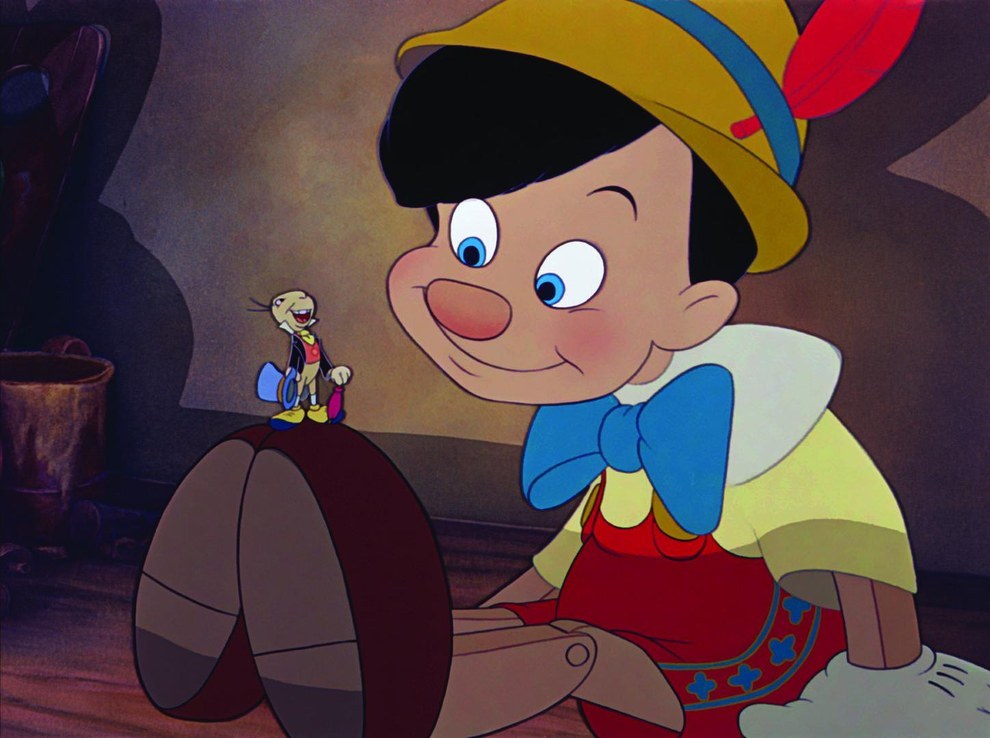
Walt Disney Animation Studios
Directed by: Ben Sharpsteen, Hamilton Luske, William “Bill” Roberts, Norman Ferguson, Jack Kinney, Wilfred Jackson, and T. Hee
Written by: Ted Sears, Otto Englander, Webb Smith, William Cottrell, Joseph Sabo, Erdman Penner, and Aurelius Battaglia
It’s incredible to see how much Walt Disney Animation Studios grew in just a few years by watching Snow White and Pinocchio back to back. Pinocchio
is a nearly perfect animated fairy tale, made all the more impressive
by the fact that it’s Disney’s second feature-length film. Like many of
the Disney films that would come after it, Pinocchio is
surprisingly adult. It’s geared toward children, sure, but if anything,
it’s a cautionary tale: Tell a lie and your nose growing will be the
least of your problems. Pinocchio suffers all manner of indignity, from
almost transforming into a donkey to getting swallowed by a whale. But
there’s something admirable about the way the film refuses to pull any
punches. At its best, Disney doesn’t coddle its younger viewers or talk
down to them. It’s challenging and sometimes seriously frightening, but
you’re better for having seen it. Besides, the Blue Fairy turns
Pinocchio into a real boy in the end. There’s a lesson to be learned.
When you wish upon a star, your dreams come true — but that doesn’t mean
there won’t be trouble along the way.Written by: Ted Sears, Otto Englander, Webb Smith, William Cottrell, Joseph Sabo, Erdman Penner, and Aurelius Battaglia
8. Alice in Wonderland (1951)
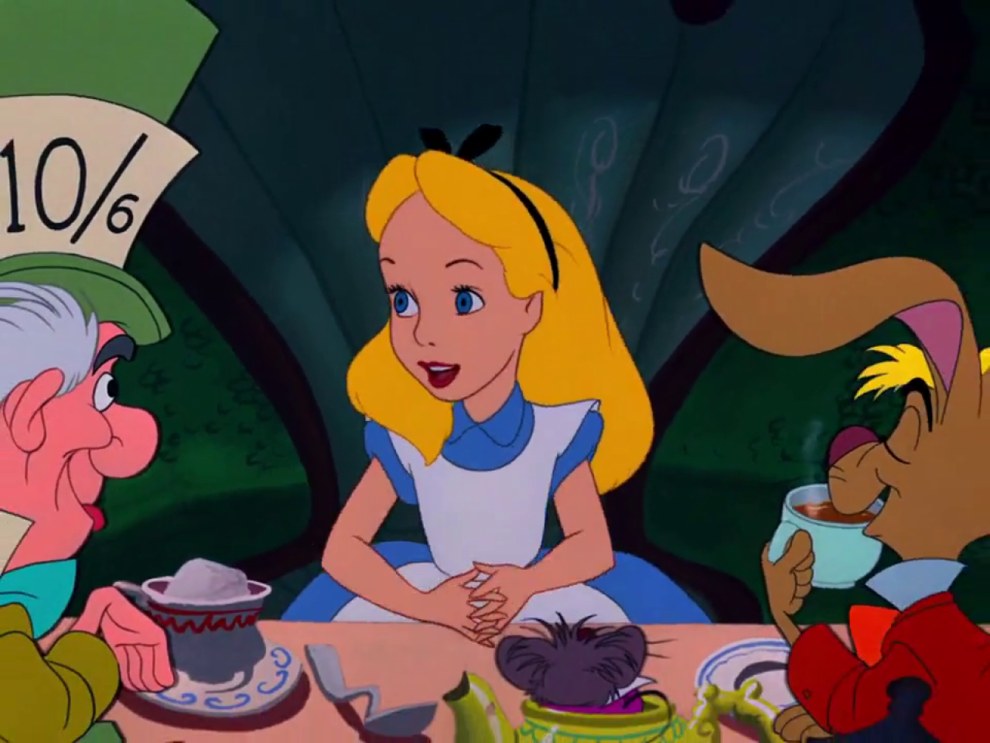
Walt Disney Animation Studios
Directed by: Clyde Geronimi, Wilfred Jackson, and Hamilton Luske
Written by: Winston Hibler, Ted Sears, Bill Peet, Erdman Penner, Joe Rinaldi, Milt Banta, William Cottrell, Dick Kelsey, Joe Grant, Dick Huemer, Del Connell, Tom Ore, and John Walbridge
Lewis Carroll’s Alice’s Adventures in Wonderland and Through the Looking Glass have been adapted over and over again, but never more memorably than by Disney. Alice in Wonderland
is both staggeringly original and instantly familiar. Although it’s
very much a classic Disney film — and still a product of its time — it
takes some real risks, all of which pay off. While Carroll deserves
credit for the characters, they’re brilliantly realized here: the
Cheshire Cat, the Mad Hatter, Tweedledee and Tweedledum, and the Queen
of Hearts are some of Disney’s most recognizable characters. At one
point, Salvador Dalí was on board to adapt these novels for Disney, and
imagining what that might have looked like is intriguing. But there’s
also something to be said for what the Disney animators came up with: a
film that wears its weirdness on its sleeve, but still manages to be
accessible to the mainstream. Of all the beloved Disney films that left
their mark on children the world over, Alice in Wonderland is very likely the strangest.Written by: Winston Hibler, Ted Sears, Bill Peet, Erdman Penner, Joe Rinaldi, Milt Banta, William Cottrell, Dick Kelsey, Joe Grant, Dick Huemer, Del Connell, Tom Ore, and John Walbridge
7. Mulan (1998)
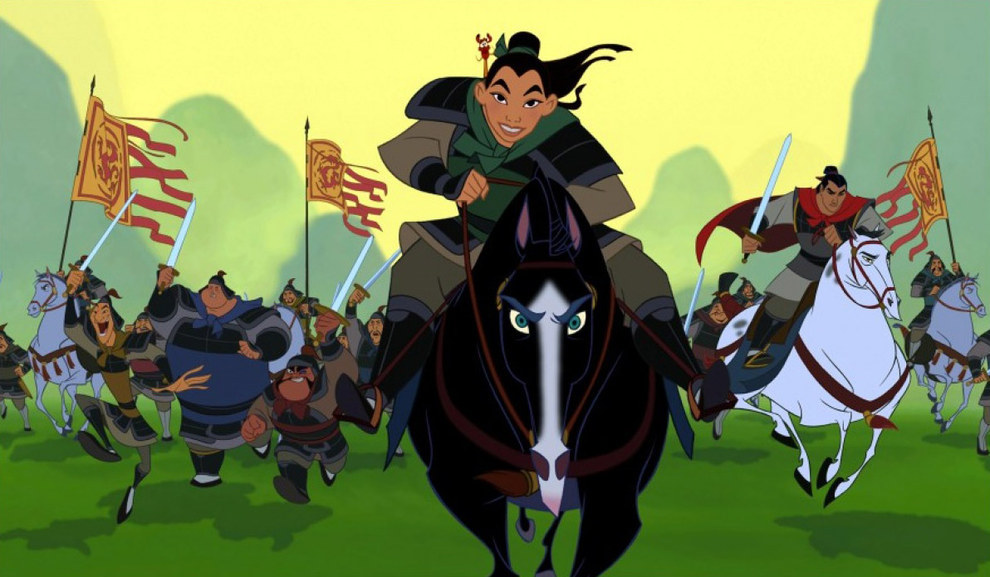
Walt Disney Animation Studios
Directed by: Tony Bancroft and Barry Cook
Written by: Rita Hsiao, Philip LaZebnik, Chris Sanders, Eugenia Bostwick-Singer, and Raymond Singer
Disney has long been big with the gays: Thousands of words have been
written on the topic, so it’s not worth belaboring here. But it is
important to note that Mulan, more than any other Disney film,
feels like a love letter to embracing one’s queer identity. The song
“Reflection” has become a rallying cry, but while it’s tempting to claim
this for the gays, it’s powerful for anyone who has ever felt
uncomfortable in their own skin. Mulan herself is also the strongest
Disney Princess, and not only in the physical sense. Like Ariel and
Belle, she is fiercely independent, but she takes matters into her own
hands in a way that few other Disney heroines do. Mulan is a queer icon —
dressing up in men’s clothing and subverting one’s gender identity will
do that — but she’s also one of Disney’s very best feminist role
models. If the politics of Mulan bore you, there’s obviously
still plenty to be enjoyed. The action sequences are exciting, the jokes
are on point, and “I’ll Make a Man Out of You” is dangerously catchy.
Enjoy Mulan on a surface level or engage with it critically: It’s great either way.Written by: Rita Hsiao, Philip LaZebnik, Chris Sanders, Eugenia Bostwick-Singer, and Raymond Singer
6. The Princess and the Frog (2009)
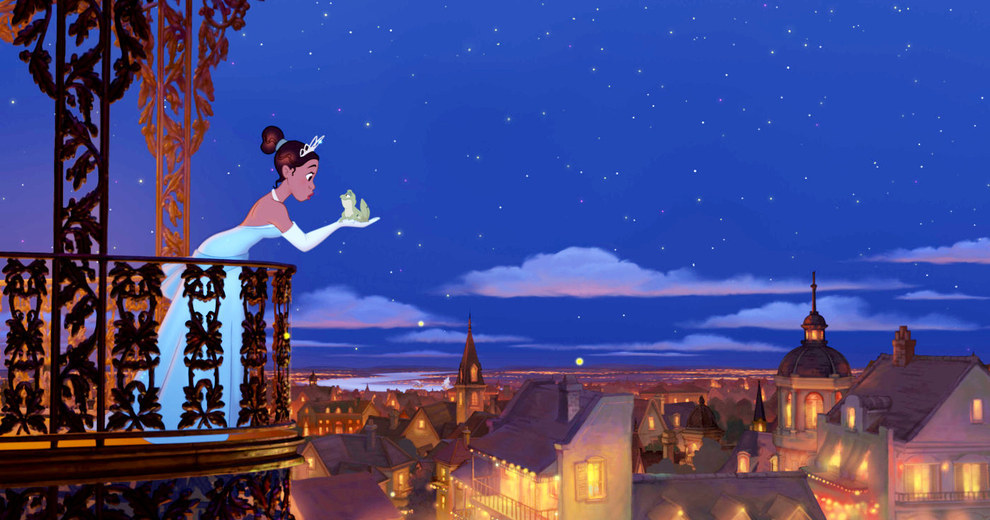
Walt Disney Animation Studios
Directed by: Ron Clements and John Musker
Written by: Ron Clements, John Musker, and Rob Edwards
Yes, really. Of the more recent Disney films, it’s nowhere near as popular as Frozen or even Tangled. But The Princess and the Frog
is the closest Disney came in the 2000s to the heights of the ’90s
Disney Renaissance. It’s a musical in the truest sense, with a Broadway
sensibility that recalls The Little Mermaid and Beauty and the Beast.
Tiana might not be as strong as Mulan, but she’s an even more important
Disney Princess: She’s the purest articulation of the idea that you
should never stop dreaming, but also never stop working toward your
goals. The fact that she’s a black woman, given Disney’s
less-than-stellar history with people of color, makes her stark
independence and influential power that much more exciting. It’s a real
pity that The Princess and the Frog hasn’t found the fanbase it
deserves, but hopefully it’s a film that will grow in people’s
estimation over time. At the very least, it’s a stunning and necessary
reminder of the emotional resonance of a strong story, rich music, and
good old-fashioned 2D animation.Written by: Ron Clements, John Musker, and Rob Edwards
5. The Hunchback of Notre Dame (1996)
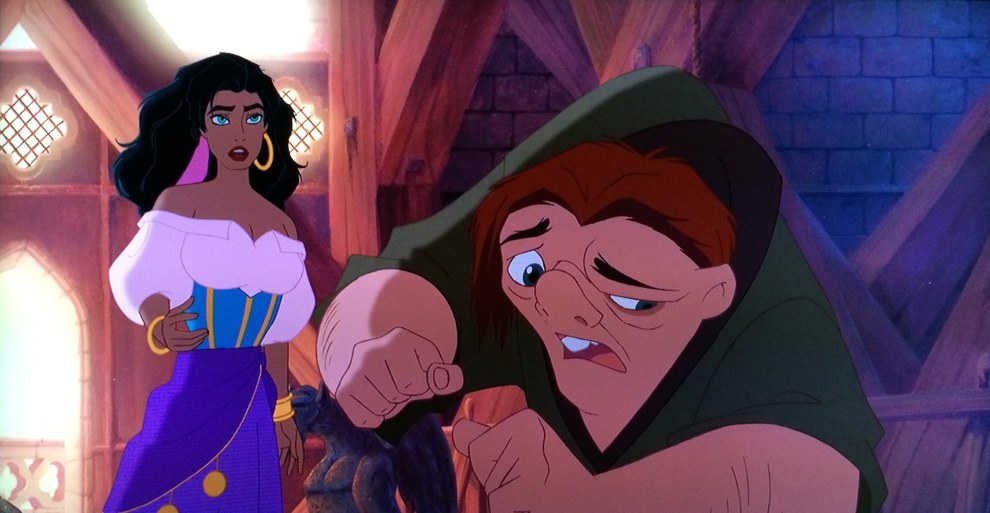
Walt Disney Animation Studios
Directed by: Gary Trousdale and Kirk Wise
Written by: Tab Murphy, Irene Mecchi, Bob Tzudiker, Noni White, and Jonathan Roberts
There are many Disney films that gain something when watched again as an adult, but The Hunchback of Notre Dame
is a special case. This is perhaps the only Disney movie that is
utterly wasted on children. Perhaps it should be ranked lower by that
logic — as a kids’ movie, it’s mostly a failure. But screw kids: The Hunchback of Notre Dame
is a gorgeous achievement with breathtaking animated sequences and some
of the finest music ever written for a Disney film. “Hellfire,” a song
about sexual obsession that somehow slipped into Hunchback, is an
incredible song made all the more impressive by the harrowing scene in
which Judge Claude Frollo imagines his own damnation. Quasimodo is a
tragic figure, doomed to a much less happy ending than Disney is
accustomed to. The film wisely flubs the “happily ever after” — exactly
how are Quasimodo, Esmeralda, and Phoebus going to make a new life for
themselves? — but the reality of his situation, much like the ponderous
themes throughout, is better left for grown-ups to ponder.Written by: Tab Murphy, Irene Mecchi, Bob Tzudiker, Noni White, and Jonathan Roberts
4. Aladdin (1992)
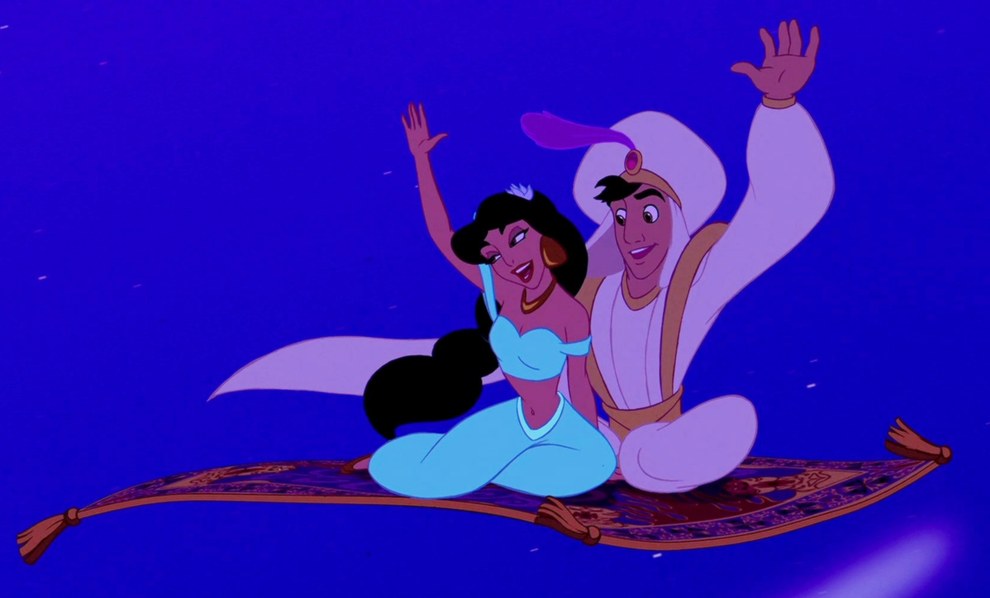
Walt Disney Animation Studios
Directed by: Ron Clements and John Musker
Written by: Ron Clements, John Musker, Ted Elliott, and Terry Rossio
It’s no surprise that the top five films are all products of the
Disney Renaissance. The question of how to order them, however, was a
matter of splitting hairs and personal preference, because they’re all
wonderful. Aladdin is the funniest of the lot, thanks to
incredible work by the late Robin Williams as the Genie. The film is
largely a showcase for his abilities as an impressionist and an
exceptional performer. It’s hard to imagine Aladdin attaining
the instant classic status that it did without him. In fairness to the
many other people involved in the production, though, Aladdin
is about more than just the Genie. The script as a whole is smart and
very funny, retelling an ancient Arab folktale with a distinctly modern
sensibility. Aladdin and Jasmine get one of the film’s most memorable
scenes, a magic carpet ride over Agrabah while they duet “A Whole New
World.” And Jafar is another in a long line of scene-stealing villains,
with a major assist from his sidekick, the parrot Iago, who owes it all
to comedian Gilbert Gottfried for providing his inimitable voice.Written by: Ron Clements, John Musker, Ted Elliott, and Terry Rossio
3. The Lion King (1994)
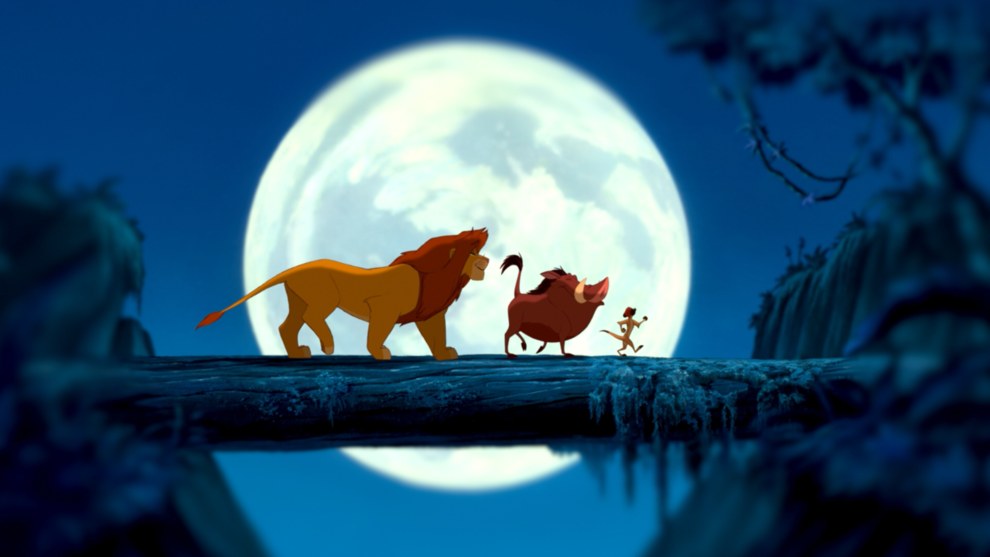
Walt Disney Animation Studios
Directed by: Roger Allers and Rob Minkoff
Written by: Irene Mecchi, Jonathan Roberts, and Linda Woolverton
The Lion King features the best opening of any Disney film.
The “Circle of Life” scene — as the animals converge to celebrate the
arrival of Simba — is breathtakingly gorgeous. The movie is essentially a
loose adaptation of Hamlet with lions — Rosencrantz and
Guildenstern, however, have been turned into a warthog and a meerkat —
and it amazingly works. Although it’s rather heavy for kids — Mufasa’s
death is another one of those innocence-robbing childhood movie memories
— it’s really a beautiful viewing experience at any age. It helps that The Lion King
manages to move effortlessly from the dark to the light. The operatic
“Circle of Life” gives way to the frivolous “I Just Can’t Wait to Be
King.” Later, Mufasa’s death and Simba’s flight from the kingdom segues
into the introduction of Timon and Pumbaa, two of the greatest comic
relief characters in Disney history. With a score by Elton John and Tim
Rice, The Lion King feels so much grander than anything that came before it. And it moves us all.Written by: Irene Mecchi, Jonathan Roberts, and Linda Woolverton
2. The Little Mermaid (1989)
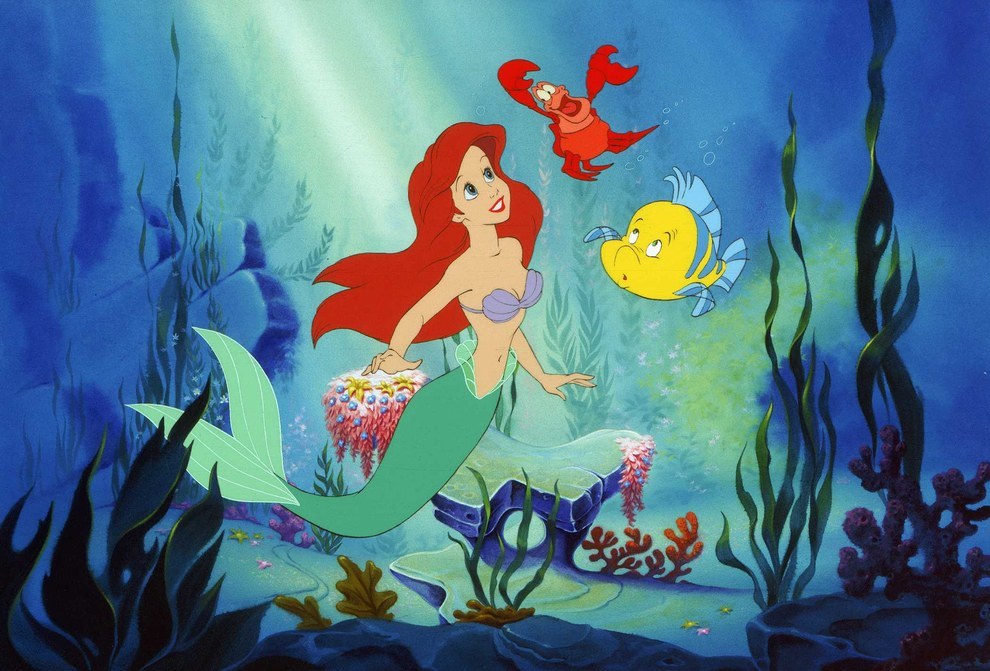
Walt Disney Animation Studios
Directed by: Ron Clements and John Musker
Written by: Ron Clements and John Musker
There would be no Disney Renaissance without The Little Mermaid, the movie that ushered it in. The Little Mermaid
didn’t just represent a return to high-quality animation and
storytelling — there were other solid Disney films in the ’80s. It’s
actually notable for bringing about an entirely new kind of Disney film:
the movie musical. Yes, Disney films before The Little Mermaid almost always incorporated music, but The Little Mermaid was the first to be structured like a traditional movie musical. And it worked, paving the way for Beauty and the Beast and Aladdin, among others. Its influence aside, The Little Mermaid
is a fantastic film. It has a much happier ending than the Hans
Christian Andersen fairy tale from which it’s adapted, but it doesn’t
lose its potency. Ariel is the quintessential Disney Princess: curious,
driven, and desperate for a life of her own. And then there’s Ursula,
the greatest of all Disney villains. It’s fitting that Ariel and Ursula
get the best songs: Ariel’s anthem “Part of Your World” and Ursula’s
“Poor Unfortunate Souls,” a high bar other villains’ songs can never
quite reach.Written by: Ron Clements and John Musker
1. Beauty and the Beast (1991)
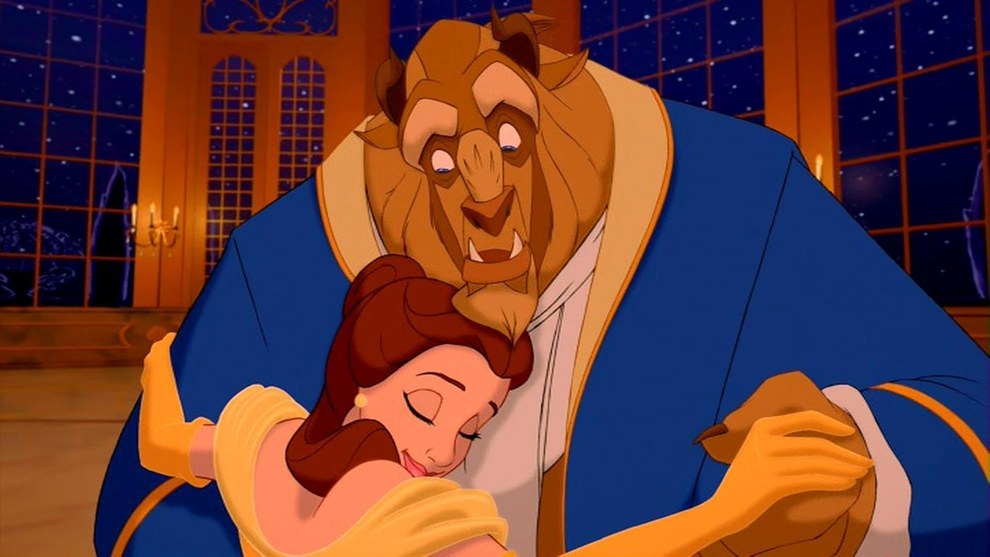
Walt Disney Animation Studios
Directed by: Gary Trousdale and Kirk Wise
Written by: Linda Woolverton
No Disney film has ever been better than Beauty and the Beast, and it’s hard to imagine another ever will. The first animated film to be nominated for Best Picture at the Academy Awards, Beauty and the Beast
is the culmination of decades of perfecting the form. It is the
flawless combination of story, animation, and music — a film that works
on every level and gets better with each repeat viewing. From the
beautiful stained glass opening and the introduction of bookish Belle,
to the show-stopping “Be Our Guest” and the Beast’s discovery of his own
humanity, Beauty and the Beast takes its audience on the kind of journey that Walt Disney could only have dreamed of. Beauty and the Beast
is the height of the Disney Renaissance, which is not Disney returning
to its former glory — it’s Disney reaching a new level of excellence,
one that it couldn’t have achieved without the classics that came before
it. The new and the old come together seamlessly in the ballroom dance
scene. As Mrs. Potts sings the title song, 2D animation and computer
technology combine for Belle and the Beast’s first dance.Written by: Linda Woolverton
No comments:
Post a Comment